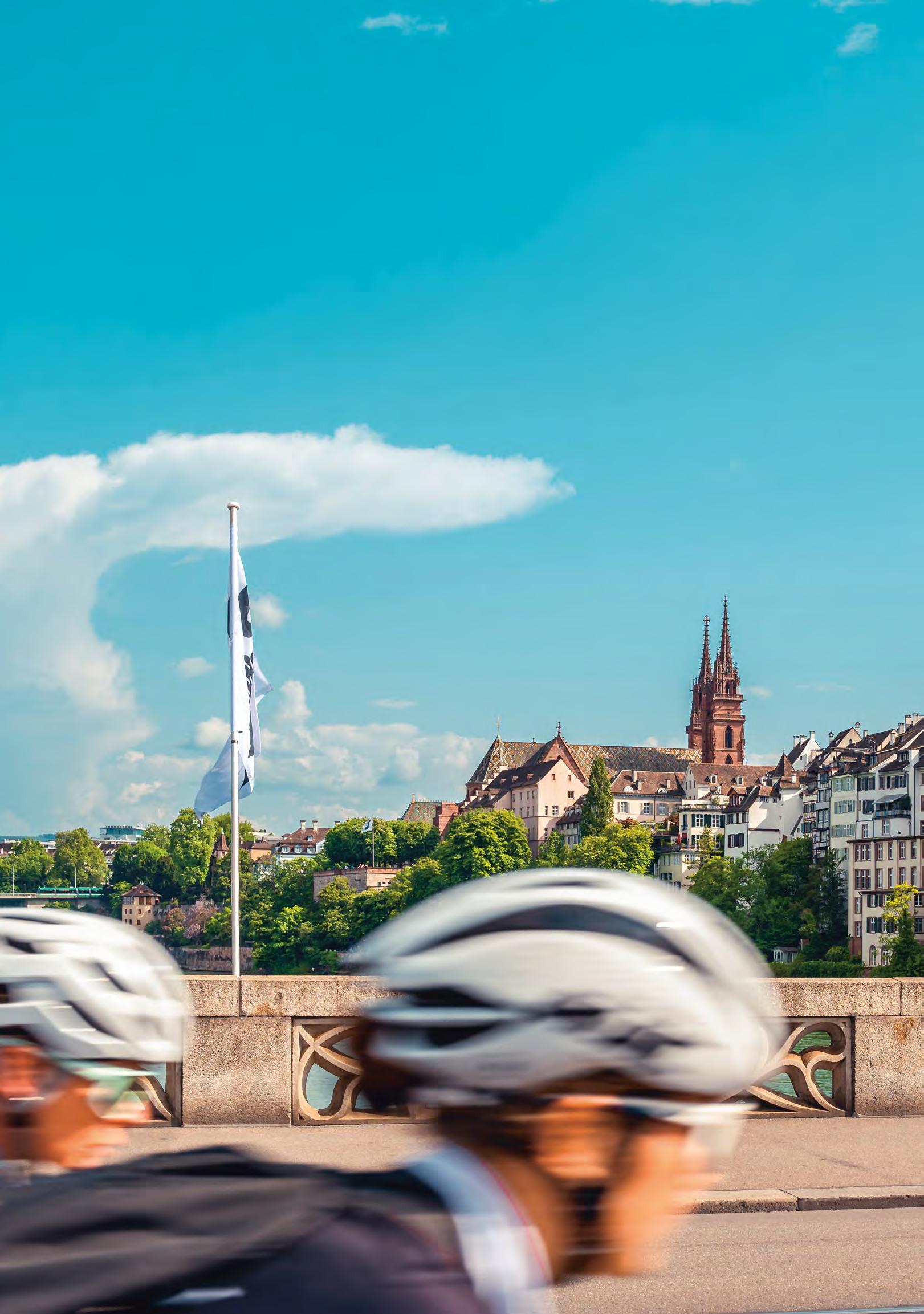BASEL MOMENTS



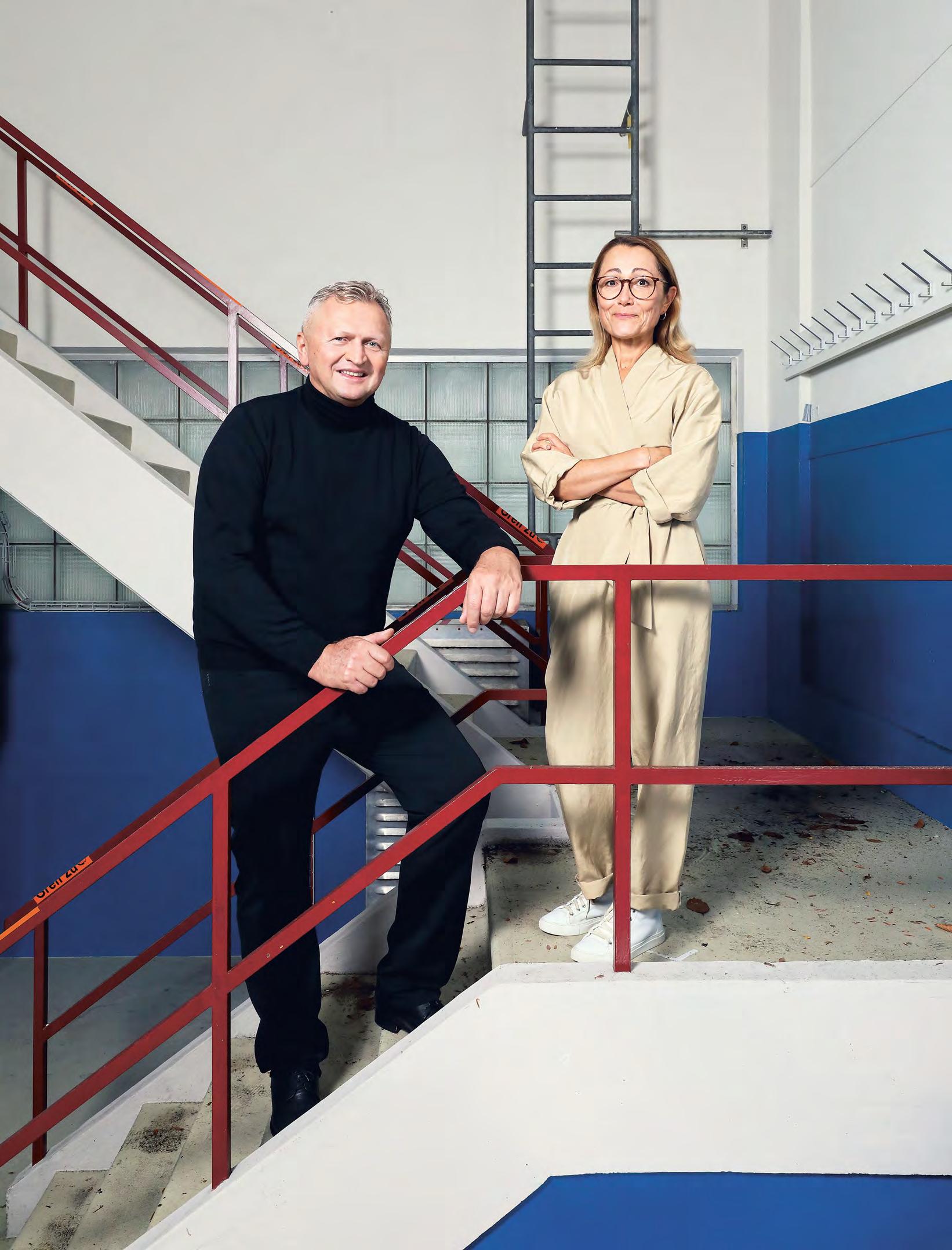
«Weshalb Basel?» frage ich die Menschen gerne, wenn ich sie für die Reportagen in diesem Magazin treffe. «Wegen der Nähe zur Grenze», heisst es meist. Diese Nähe, sie gibt der Stadt eine aussergewöhnliche Offenheit und vermittelt gleichzeitig das Gefühl, eng mit dem Rest der Welt verbunden zu sein. Ich habe das eindrücklich erlebt, als ich nach Jahren in der gebirgigen Zentralschweiz nach Basel zurückkam. Bei meinem ersten Einkauf plauderte die Kassiererin im Quartierladen so selbstverständlich und mit unverkennbar elsässischem Akzent mit mir, dass mich die süsse Wehmut der wiedergefundenen Heimat überkam.
In Basel bekomme ich, was mein Herz begehrt. Von spanischen Tapas bis zu libanesischen Mezze, von der Pizza über die Gasse bis zum 9-Gänger im Sternerestaurant, vom Eistee im Park bis zum Negroni auf der Dachterrasse. Hier finde ich imposante Stahlbetonbauten neben zukunftsweisenden Wohnquartieren, historische Prachtgebäude neben Bauwerken internationaler Star-Architekten. Ich habe die Wahl zwischen Sinfoniekonzert, Kabarett und philosophischer Diskussionsrunde, suche an Flohmärkten Schätze und in Design-Stores meinen Stil, treffe bekannte Gesichter an Vernissagen und tanze zu Live-Musik Swing. Für Oper, Schauspiel und Ballett gehe ich ins grösste Dreispartenhaus der Schweiz und wenn ich Kunst sehen will, weiss ich kaum, wo ich beginnen soll.
Weshalb auch immer du dich für Basel entschieden hast; in diesem Magazin findest du einige Gründe, um länger zu bleiben oder wiederzukommen. Spätestens zum Sonnenuntergang solltest du jedenfalls ans Kleinbasler Rheinufer spazieren. Denn mit den letzten Sonnenstrahlen des Tages im Gesicht und einem lokalen Bier in der Hand wird das kleine Basel definitiv zur grössten Stadt der Welt. Wir sehen uns.
“Why Basel?” is the question I like to ask people when I meet up with them to report for this magazine. “Because it’s so close to the border” is the most frequent answer. It’s this proximity which gives the city its exceptional openness and also the feeling that it is closely connected to the rest of the world. I felt this most keenly when I returned to Basel after living in the mountainous area of Central Switzerland for some years. The first time I popped into the local shop to buy some groceries, the lady at the checkout chatted to me so naturally and in such an unmistakeably Alsatian accent that I was quite overcome with the delight and nostalgia of having found my way home again.
In Basel I can find everything my heart desires. Spanish tapas or Lebanese mezze; takeaway pizza or a 9-course menu in a Michelin star restaurant; iced tea in a park or a negroni on a roof terrace. I can seek out imposing reinforced concrete constructions alongside visionary residential quarters, magnificent historical buildings side-by-side with the edifices of internationally celebrated architects. I have the choice of symphony concerts, cabaret or philosophical round tables; I can search for hidden gems at the flea markets and design stores that suit me, meet up with old acquaintances at previews and dance to live bands playing swing. For opera, theatre and ballet I visit Switzerland’s largest tripartite theatre with productions from all three disciplines. And if it’s art I am longing for, I am so spoiled for choice I don’t even know where to start.
Regardless of why you have chosen Basel, in this magazine you’ll find a few very good reasons to linger a while longer or come back again soon. By sunset, at the latest, you should take a stroll along the Kleinbasel bank of the Rhine. With the last rays of the sun warming your face and a locally brewed beer in your hand, little Basel suddenly feels like the biggest city in the world. See you there. #LoveYourCity
EIN DIRIGENT FUR ALLE FÄLLE
Unterwegs mit Ivor Bolton, dem Chefdirigenten vom Sinfonieorchester Basel
20
LOKALE BIERBRAUEREIEN
Anstossen auf die Basler Biervielfalt
22 IM FOKUS: CHRISTOPH MERIA N STIFTUNG
34
KUNST AM STRASSENRAND
Wo ein Stadtspaziergang zum Kunstspaziergang wird
45 HIDDEN PLACES
53
FASHIONTALENTE VON HIER
Basler Modeschaffende stellen sich der Problematik der Modeindustrie
BASLER BRÜCKEN
16
DER TEUFELHOF
Wo sich gutes Essen, Kunst, Kultur und ehrliche Gastfreundschaft treffen
28
ADIEU GRAU, SALI ROSA!
Dress up – für einen unverwechselbaren Look
KA-BOOM
EINE ODE AN DEN COMIC
48
EINE GESCHICHTE HINTER JEDEM FOULARD
Zu Besuch im Atelier von Fabia Zindel, Gründerin und Designerin von Matrix


Ivor Bolton leitet seit sieben Jahren als Chefdirigent unter anderem das Sinfonieorchester

Basel. Der 65-jährige Brite hat das Orchester überaus erfolgreich durch die Pandemie geführt. Auch wenn er 2025 an Markus Poschner übergeben wird, dürfte es um Bolton nicht ruhiger werden.
Im Mai jährt sich die legendäre Expedition des Basler Sinfonieorchesters nach Salzburg bereits zum zweiten Mal. Es war anlässlich der ersten Lockerung der Covid-19-Pandemie-Massnahmen, als das Sinfonieorchester Basel seine Sachen packte und kurzerhand nach Salzburg fuhr, um zwei Konzerte zum Besten zu geben. Wobei das Wort «kurzerhand» trügerisch ist: Die Geschichte hatte ein Vorspiel und begann schon im März 2020, als die ersten Verträge unterschrieben wurden. Man hatte damals zwar von Covid-19 gehört, aber niemals erwartet, was wenige Wochen später losgehen würde: Quarantäne, Lockdown, vollständiges Aus für Veranstaltungen.
Es waren aber just diese Verträge, die ein Jahr später ein wunderbares, wenn auch anstrengendes Abenteuer bedeuten sollten. Die Inzidenzzahlen der Covid-Fälle sanken, erste Ankündigungen von Lockerungen standen im Raum, insbesondere in Österreich – und die Salzburger wünschten immer noch ausdrücklich, dass die Basler sie besuchen kommen. Das Sinfonieorchester liess sich nicht zweimal bitten. Doch das Unterfangen erforderte Planung und ein gewisses Mass an unternehmerischem Wagemut.
Mittendrin stand Ivor Bolton, heute 65 Jahre alt, Chefdirigent des Sinfonieorchesters Basel, zugleich Musikdirektor des Teatro Real in Madrid, Chefdirigent des Dresdner Festspielorchesters und Ehrendirigent des Mozarteums in eben jenem österreichischen Salzburg, das Bolton nun endlich mit seinen Basler Sinfonikern besuchen sollte. Bolton lacht, wenn er sich an diese Expedition erinnert, schiebt aber zugleich mit einem nachdenklichen Blick nach: «Der Lockdown. Meine Güte! Vier bis sechs Wochen an einem Ort, das hatte ich seit meinen Kindestagen nicht mehr erlebt.» Denn das Leben eines Chefdirigenten wie Bolton ist ein Leben auf Achse, stets mit den Partituren im Gepäck und einer gut getakteten Agenda gleich mehrere Orchester an mehreren Orten, nun ja: orchestrierend.


Bolton ist ein Bollwerk von einem Mann, kein Wunder bei diesem Berufsalltag – es braucht einen tiefen Antrieb, um sich einem solchen kosmopolitischen Lebensstil auszusetzen. Vor allem, wenn man wochenweise in der Schweiz, in Deutschland, in Österreich und dann wieder in Spanien ist, wo Bolton mit seiner Familie in Barcelona den Wohnsitz hat. Die Arbeitszeiten reichen locker vom Vorabend bis spätnachts, das richtige Nachtessen gibts nicht selten erst gegen Mitternacht. Eine anstrengende Lebensweise, die Hingabe erfordert. Hingabe zur Musik, aber auch zum Orchester und vor allem zu den Menschen, die das Orchester ausmachen. Dazu gehören selbstredend die Musiker, aber auch die Direktion, die Technik und das Personal, das den gesamten Betrieb aufrechterhält.
Die Episode mit Salzburg also konnte 2021 zum Exempel für das Funktionieren dieses Orchesters werden: Tournee – ja oder nein? Falls ja: Was ist alles zu beachten? Und: Ist das politisch überhaupt opportun? Die Antwort war früh klar. Gegenüber den Zeitungen von CH Media sagte damals Hans-Georg Hofmann, künstlerischer Direktor des Sinfonieorchesters Basel: «Wir wollen und können damit auch zeigen: Es geht.»
Denn Orchester reisen nun mal, Tourneen gehören zu ihrem Leben wie Beethoven, Schubert, Mendelssohn, auch wenn während des Lockdowns in einigen Kreisen bereits von einem «Ende der Herumreiserei» fantasiert wurde. Tatsache bleibt, dass sich die Orchester im Ausland präsentieren müssen, so will es auch ihr öffentlicher Leistungsauftrag. Zumal Tourneen gutes Geld einbringen.
Also machte sich das Sinfonieorchester bereit, testete sämtliche Schutzmassnahmen durch, bereitete sich bis zur letzten Minute minutiös auf diesen wichtigen Auftritt vor dem geimpften, getesteten oder genesenen, aber noch stets maskentragenden Publikum vor – und fuhr Ende Mai tatsächlich mit dem Zug nach Österreich. «Und dann, urknallplötzlich, ist alles, was da sticht und plagt, stört und verhindert, tötet und lähmt, vergessen. Auf der Bühne bei den Künstlern zuallererst», schrieb der Kulturjournalist und Musikkritiker Christian Berzins damals in den Zeitungen von CH Media.
Das Gastspiel, verschränkt mit der Lesung von Peter Simonischek aus einem eigens gefertigten Promotheus-Text des Basler Schriftstellers Alain Claude Sulzer, war ein enormer Erfolg. «Die Schweizer wirken vom ersten Takt weg eingespielt, als hätte es nie eine Corona-Pause gegeben», schrieb die «Kronen-Zeitung» kurz darauf und würdigte Boltons einfühlsames Orchester ebenso wie Simonischeks «grandiose» Rezitation: «Das bejubelte Resultat: Musik und Text in kunstvoller Symbiose vereint.»
Heute, zwei Jahre später, kehrt langsam wieder eine Normalität in den Konzertbetrieb ein, wie man sie aus vorpandemischen Zeiten kannte. Und für Ivor Bolton geht es sachte auf den Abschied aus Basel zu, wo er seit der Saison 2016/17 Chefdirigent des Sinfonieorchesters ist. Ab 2025 übernimmt der heute 52-jährige deutsche Markus Poschner vorerst für fünf Jahre von Bolton. Aber bis dahin ist der gebürtige Brite Bolton noch voll im Einsatz: Am 19. April kündigte das Orchester die Saison 2023/24 unter dem Motto «Familienbande» an. Neben den Heimspielen mit prominenten Künstlerinnen und Künstlern wie den Jussen-Brüdern aus den Niederlanden oder den Labèque-Schwestern aus Frankreich wird es auch wieder Gastspiele geben. In Salzburg, freilich, in Wien, Luzern und an weiteren Orten.


Wirklich ruhiger angehen lassen wird es Bolton aber kaum. Sein Gemüt, so sensibel und einfühlsam es in seiner musikalischen Leitung zur Geltung kommt, ist zu energiegeladen, viel zu begeistert von dem, was ihn antreibt. Auch wenn die Jahrzehnte des Reisens und der Bühnenauftritte ihren Tribut fordern. Derzeit ist Bolton nicht allzu gut zu Fuss, was seinem Enthusiasmus allerdings keinerlei Abbruch tut. Beim Fototermin zwischen dem Proberaum des Sinfonieorchesters und dem Basler Stadtcasino am Barfüsserplatz legt der Mann mit dem herzhaften Lachen ein gutes Tempo vor. Da längere Distanzen gerade nicht so gut gehen, erzählt er einfach im kleinen Orchester-Bus weiter, der eigens dafür zwischen den zwei Sälen pendelt.
Lieber als im Auto sitzt Bolton aber im Zug. Vor allem in Spanien, die Qualität dieses Transportmittels sei dort wahnsinnig gut, sinke aber schlagartig, wenn man zum Beispiel auf einen Zug in Italien wechseln müsse. Alles in allem sei «Europe by train» eine «great experience», wobei er zugeben müsse, dass er den Transfer von Spanien nach Basel jeweils aber eher im Flugzeug absolviere, manchmal sei der Luftweg einfach effizienter. Und wenn er dann eben hier sei, verbringe er die meiste Zeit in der Tat im Stadtcasino – eigentlich mehr noch als im Proberaum am Picassoplatz oder in der Wohnung, die er für seine Basler Tage und Wochen in Bottmingen hat.
Und wenn er dann mal Freizeit hat, mag er die Museen. «Die Fondation Beyeler ist ein Traum», sagt er, vor allem wegen des Gartens. «Und natürlich das Kunstmuseum! Ein Ort der Ruhe und Kontemplation.» Dann dreht er sich um und fragt den Chauffeur: «Warte, wie hiess das Restaurant nochmals, in dem wir da kürzlich waren? Weisst du, das ehemalige Gefängnis?» Kurzes Überlegen, dann der Ausruf: «Das Au Violon! Ja, das war sensationell.» Sagts und strahlt spitzbübisch. Aber eben, viel Zeit zum Verweilen bleibt beim «tight schedule» eines Chefdirigenten alter Schule nicht. Umso wertvoller sind die einzelnen Momente der Ruhe.
«Wissen Sie», sagt er kurz vor dem Abschied, als wir zum letzten Mal an diesem Tag den Proberaum verlassen und jemand aus der Verwaltung an uns vorbeigeht: «Bei einem Orchester, da ist die Stimmung enorm wichtig, und zwar im gesamten Haus – wenn es sozusagen obenrum nicht klappt, dann merkt man es einfach. Ein Orchester ist in sehr vielen Belangen wie eine Familie.» Wie es denn in Basel sei, wollen wir wissen. Bolton dreht sich um, einen intensiven Blick in den Augen, während die Lippen erneut ein Lächeln formen: «Hervorragend! Basel hat ein wunderbar geführtes Sinfonieorchester.» Sagts, schüttelt noch einmal herzhaft die Hand und steigt wieder in den Minivan. Denn es ist bei aller Freude dieser Begegnung an der Zeit. Herr Bolton hat noch weitere Termine.


Ivor Bolton, the principal conductor, has been conducting the Basel Symphony Orchestra, among others, for seven years now. The 65-year-old from the UK guided the orchestra through the covid pandemic with eminent success. Even though he will be handing over the baton to Markus Poschner in 2025, it’s unlikely that the remainder of his tenure will be any less eventful.

In May, it was already the second anniversary of the Basel Symphony Orchestra’s legendary expedition to Salzburg. During the first relaxation of the Covid-19 pandemic measures the members of the Basel Symphony Orchestra packed their bags and headed off to Salzburg without any further ado to perform two concerts. Although the term ‘without further ado’ is a little deceptive: this tale had a prelude, and in fact began in March 2020, when the original contracts were signed. People had already heard about the new corona virus at that point, but nobody was prepared for what it would trigger just a few weeks later: quarantines, lockdowns, the ceasing of all cultural events.
And yet it was precisely those contracts which, a year later, resulted in a marvellous, if somewhat challenging adventure. The incidence rates of Covid cases fell, the first announcements that restrictions were to be relaxed, particularly in Austria, were being discussed – and Salzburg was still very keen to welcome its visitors from Basel. The Symphony Orchestra did not have to be asked twice. But the venture did require planning and a fair portion of enterprise and audacity.
And at the eye of the storm was Ivor Bolton, now 65 years old, principal conductor of the Basel Symphony Orchestra; but at the same time musical director of the Teatro Real in Madrid; principal conductor of the Dresden Festival Orchestra and honorary conductor of the Mozarteum of the University of Salzburg in Austria; the very Salzburg that Bolton was finally supposed to be visiting with his Basel Symphony Orchestra. Bolton laughs when he thinks back on this expedition, but then adds, with a pensive look: “That lockdown. Yes, my goodness! Four to six weeks spent in one place; the last time I had experienced that was when I was a child.” The life of a principal conductor like Bolton is a life on the road, with musical scores and a well-measured agenda balancing a variety of orchestras in a variety of places: well-orchestrated, so to speak.
Bolton is a bastion of a man; no wonder considering his working life –it requires a deeply rooted motivation to take on such a cosmopolitan lifestyle. Especially when it means spending one week after the other in Switzerland, then Germany, Austria and then Spain again, where Bolton is actually based, with his family, in Barcelona. His working hours frequently last from early evening till late at night and a real evening meal is often only served around midnight. A challenging lifestyle that demands true dedication. A dedication to music, but also to the orchestra and especially to the people who make up the orchestra. Obviously, this means the musicians, but also the administrative and technical staff and the people who keep the whole thing running smoothly.
So the Salzburg episode is a prime example of how the orchestra functioned in 2021: Concert tour – yes or no? If yes: What has to be weighed up? And: Is the plan even politically opportune? The answer to that was quickly very clear. Hans-Georg Hofmann, the Artistic Director of the Basel Symphony Orchestra informed the Swiss newspapers and media: “We want and are able to prove with this tour: It can be done.” Because orchestras do travel, concert tours are as much a part of their lives as Beethoven, Schubert and Mendelssohn, even if there was some wishful thinking in some circles at the time regarding the “end of unlimited travel”. The fact remains that orchestras have to perform abroad as well; it is even part of their public service contract. All the more so since concert tours generate good income.
And so the Symphony Orchestra started to make ready, tested every possible protective measure, and right up to the last second, prepared themselves meticulously for this notable performance in front of an audience vaccinated, tested or recuperated, but nonetheless all in masks – and finally, at the end of May, they really did take the train to Austria. “Then, at one stroke, everything that stings or bothers you, distracts or thwarts you, everything that kills and lames is forgotten. First and foremost, among the musicians on the stage”, is how the cultural reporter and music critic, Christian Berzins, described it at the time in the Swiss newspapers.
Their guest performance, interlaced with the reading by Peter Simonischek of a Prometheus text written especially for the occasion by the Basel author, Alain Claude Sulzer, was a roaring success.
“The Swiss appeared perfectly attuned from the first beat, as though the Corona hiatus had never occurred”, was the commentary published shortly afterwards in the ‘Kronen’ newspaper and they paid tribute to Bolton’s insightful orchestration and Simonischek’s “superb” recitation: “The highly acclaimed result: music and text in artful symbiosis.”
Now, two years later, a normality (as in how things were before the pandemic) is slowly returning to the concert schedule. And for Ivor Bolton, the moment is also approaching when he must bid farewell to Basel, where he has been the principal conductor of the symphony orchestra since the 2016/17 season. In 2025, the German Markus Poschner, currently 52 years old, will be taking over from Bolton, initially with a five-year contract. But until that moment arrives, the British-born Bolton is still fully committed: On 19 April the orchestra announced its 2023/2024 season under the motto “Family ties”. In addition to home performances with prominent guest artists such as the Jussen brothers from Holland and the Labèque sisters from France, the orchestra will also give guest performances. In Salzburg, of course, but also in Vienna, Lucerne and other venues.


It is unlikely that Bolton will really take things any easier. His disposition, despite the delicacy and sensitivity he displays when conducting music, is too full of energy and enthusiasm for what drives him to allow for that. And even though the decades of travel and performance on stage have taken their toll and Bolton is not so light on his feet at the moment, this has not dampened his enthusiasm in any way. During the photo shooting, this man with the hearty laugh sets a good pace between the symphony orchestra’s rehearsal room and Basel’s Stadtcasino. But since he cannot manage any longer distances at the moment, he simply continues to chat in the orchestra’s minibus, which is there just to shuttle him from one music room to the other.
Bolton himself prefers to travel by train rather car. Especially in Spain, where the standard of this mode of transport is incredibly high; a standard that sinks dramatically if, for example, he has to change onto a train in Italy. All-in-all he finds “Europe by train” a “great experience” though he admits that he tends to travel from Spain to Basel by plane, because sometimes air travel is simply more efficient. And when he is here, he spends most of his time at the Stadtcasino – more so than in the rehearsal room at the Picassoplatz or the apartment he keeps in Bottmingen for his days and weeks in Basel.
When he does have some free time he enjoys the museums here. “The Fondation Beyeler is an absolute dream”, he says, especially because of its garden. “And of course, the art museum! A place of peace and contemplation.” Then he turns around and asks the chauffeur: “One minute, what’s the name of that restaurant we went to recently? You know, the one in the old prison building?” He thinks for a moment then exclaims: “The Au Violon! Precisely, that was sensational.” As he says it, he grins mischievously. There’s not much time to spare in the tight schedule of an old-school principal conductor. Which makes those scattered interludes of peace all the more precious.
“You see”, he said shortly before we bid farewell to each other, as we were leaving the rehearsal room for the last time that day and as someone from administration walked past us: “With an orchestra, the atmosphere is incredibly important, and I mean in the entire establishment – if things are not functioning at the top, so to speak, then you really notice it. In many ways, an orchestra is like a family.” What’s it like in Basel then? we want to know. Bolton turns back to us with an intense look in his eyes while his lips form another smile: “Superb! Basel has a wonderfully managed symphony orchestra.” That said, he shakes hands heartily once more and gets into the minivan again. It’s time to go, no matter how pleasant the encounter has been. Mr Bolton has other appointments.
Sieben Brücken bieten unterschiedliche Blinkwinkel auf die Stadt, verbinden das Kleinbasel mit dem Grossbasel, die Stadt mit dem Dreiland – mit dem Rhein als Tor zur Welt. DREILÄNDERBRÜCKE


Mit unterhaltsamen Zusatzinformationen von Basels bekanntestem Stadtführer Grabmacherjoggi. With entertaining additional information from Basel's best-known city guide Grabmacherjoggi.
Streng genommen zählt die Dreiländerbrücke nicht zu den Basler Brücken, sondern verbindet das deutsche Weil am Rhein mit dem französischen Huningue. Durch ihren Namen Dreiländerbrücke wird sie aber auch als eine Schweizer Brücke wahrgenommen. Eingeweiht 2007, bietet sie sich als Fussgängerbrücke ideal für einen Spaziergang oder eine Velotour an.
Strictly speaking this is not one of Basel’s bridges, because it connects the German town of Weil am Rhein with the French town, Huningue. But its name, meaning the bridge of three countries, means it is also regarded as a Swiss bridge. Inaugurated in 2007, it is a pedestrian bridge and thus ideal for a stroll or a bicycle tour.
Wusstest du, dass … ... das französische Elsass von 1871–1918 und von 1940–45 zu Deutschland zählte, womit die Brücke dann eine Zweiländerbrücke gewesen wäre?
Did you know that … ... the French region of Alsace was part of Germany from 1871 to1918 and again from 1940 to 1945, which means it would have been a bridge of two countries during those periods?
Ursprünglich einstöckig gebaut und 1934 eröffnet, wurde sie vor rund 20 Jahren als Teil der Nordtangente für den Autobahnverkehr als zweistöckige Brücke neu gebaut. Zweifelsohne, dieser doppelstöckige Koloss ist nicht Liebe auf den ersten Blick. Den Charme der Brücke gilt es zu entdecken – bei einem Apéro bei Sonnenuntergang oder an der jährlichen Wasserschlacht zwischen den sich gegenüberliegenden Quartieren mit den Postleitzahlen 4056 und 4057.
This bridge was originally single storey and opened in 1934; but it was reconstructed as a two-storey bridge 20 years ago as part of the northern bypass for motorway traffic. It is undeniable that this two-storey behemoth does not inspire love at first sight. Its charms have to be discovered – with an aperitif watching the sunset from the middle of the bridge or at the annual water fight between the two quarters 4056 and 4057 at either end of the bridge.
Wusstest du, dass … … die Dreirosenbrücke historischen Migrationshintergrund im Namen trägt? Die im Mittelalter aus dem deutschen Rosenfeld zugewanderte Familie Iselin hatte zur Erinnerung an ihre alte Heimat drei Rosen ins Familienwappen aufgenommen, nach denen auch ihr Landgut in Kleinbasel benannt wurde – Dreirosen.
Did you know that … … the name of the Dreirosen Bridge reflects a family’s migration to Basel in the long-distant past? In the Middle Ages, the family Iselin migrated to Basel from Rosenfeld in Germany and as a memento of their old hometown they included three roses in the family coat of arms, which was also the name given to their estate in what is now Kleinbasel – Dreirosen.
1882 eröffnet, verbindet die Johanniterbrücke die St. Johanns-Vorstadt mit dem Kleinbasel – ab 1924 sogar mit einer doppelspurigen Tramlinie. Mit dem 1967 beendeten Neubau der Brücke wurden die Tramgleise wieder entfernt. Die Johanniterbrücke bildet quasi den Eingang in die quirlige Feldbergstrasse im Kleinbasel. Auf Grossbasler Seite prägt hingegen eine Institution der Basler Spitzengastronomie, das Chez Donati, das Gesicht der Brücke.
Inaugurated in 1882, the ‘Bridge of St John’ connects the St. Johanns-Vorstadt with Kleinbasel – and in 1924 it even had a double-track tramline installed. However, during the rebuilding of the bridge, completed in 1967, the tram tracks were removed again. The Johanniterbrücke forms a gateway to the lively Feldbergstrasse in Kleinbasel. At the Greater Basel end it is one of the institutions of Basel’s high-end gastronomy, the Chez Donati restaurant, that is the face of the bridge.

Wusstest du, dass … … wegen des Strassenbelags (Makadam anstelle von Asphalt) die Brücke von Beginn an als üble Staubpiste galt? Der Belag begünstigte nämlich das Aufwirbeln von Staub, zuerst durch Kutschen, später durch Autos und dann auch noch durch Trams.

Did you know that … … the bridge had the reputation of being a horribly dusty track because of its surface (tarmac rather than asphalt)? This surface material encouraged dust to be whirled up, first by coaches and then later by cars and even trams.
Die erste Basler Rheinbrücke verbindet das Klein- mit dem Grossbasel. Im 13. Jahrhundert als Holzkonstruktion erbaut, wurde sie erst 1905 durch eine komplett neue Brücke aus Stein ersetzt. Am Käppelijoch, dem Wahrzeichen der Mittleren Brücke, wurden früher Todesurteile durch Ertränken vollstreckt. Heute ist es eines der beliebtesten Fotomotive der Stadt.

Basel’s first bridge over the Rhine, connected Lesser and Greater Basel. Originally constructed of wood in the 13th century, it was only replaced in 1905, with an entirely new bridge of stone. The Käppelijoch, the emblematic construction in the middle of the bridge, was where death sentences by drowning were once executed. Nowadays it is one of the city’s most popular photo motifs.
Wusstest du, dass … … einmal ein König, ein Kaiser und ein Zar zusammen über die Brücke ritten? Als ihre Truppen über sie nach Frankreich marschierten, passierten Friedrich Wilhelm III. von Preussen, Franz I. von Österreich und Alexander I. von Russland am 13. Januar 1814 zu Pferd das Käppelijoch.
Did you know that … … once upon a time a king, an emperor and a tsar all traversed this bridge together? On 13 January 1814, on the march to France with their troops, Frederick William III of Prussia, Francis I of Austria and Alexander I of Russia all rode past the Käppelijoch on horseback.
Ein Spaziergang über die Wettsteinbrücke hat etwas Magisches. Oft sieht man Spazierende den bewegenden Moment mit dem Handy festhalten. 1879 eröffnet, wurde sie errichtet, um die zuvor einzige Brücke Basels, die Mittlere Brücke, zu entlasten. In den 1990er-Jahren war eine Sanierung notwendig und eine neue Brücke wurde aufgebaut und 1995 fertiggestellt.
There is something spellbinding about a stroll across the Wettstein Bridge. You’ll often see people out walking, capturing the moment on their mobile phones. It opened in 1879 and was built to relieve the burden on the Mittlere Brücke, which had been the only bridge up till that point. The bridge required renovation in the 1990s and an entirely new bridge was built and completed in 1995.
Wusstest du, dass … … einmal vier Basilisken auf der Wettsteinbrücke sassen? Geschaffen von Ferdinand Schlöth wurden sie 1880 auf die Brücke gestellt, bis deren Verbreiterung 1936/39 sie wieder verjagte. 1995 kam einer von ihnen aus der Langen Erlen zurück auf die Brücke.
Did you know that … … there were once four basilisks perched on the Wettstein Bridge? They were sculpted by Ferdinand Schlöth in 1880 and stood on the bridge until it was widened in 1936/39, at which point they were banished. In 1995 one of them returned to the bridge from the Lange Erlen Park.
Obschon es sich um zwei verschiedene Brücken handelt, werden die Schwarzwaldbrücke und die Eisenbahnbrücke als eine einzige Brücke wahrgenommen. Als ideale Verbindung zwischen der Schweiz und Deutschland sowohl für den Zug- als auch den Individualverkehr sind diese Brücken die meistbefahrenen Brücken Basels.

Während die Eisenbahnbrücke bereits 1873 eröffnet wurde, existiert die Schwarzwaldbrücke mitsamt Autobahnstrecke erst seit 1973. Schön anzuschauen sind sie beide nicht. Doch es lohnt sich, sie via Fussweg zu überqueren.
Although they are actually two separate bridges, the Black Forest Bridge and the Railway Bridge are often regarded as one single bridge. These two bridges provide a perfect connection between Switzerland and Germany, both by train and private transport, and they are the busiest bridges in Basel. The railway bridge was opened very early, in 1873, while the Black Forest Bridge, including a stretch of motorway, only opened in 1973. Neither of them is a particularly pretty sight, but it is worth crossing the river on the footpath below them.
Wusstest du, dass … … man in den 1930er-Jahren daran dachte, am Birsköpfli eine Kunsteisbahn anzulegen? Weil aber der Russ der Dampflokomotiven auf der Eisenbahnbrücke die Sportanlage fortwährend verschmutzt und verdunkelt hätte, wählte man dann die Margarethen am Fuss des Bruderholz.
Did you know that … … there were plans to build an ice rink at the mouth of the River Birs in the 1930s? But because the soot from the steam engines on the railway bridge would have billowed a constant cloud of pollution over the facility, the site in the Margarethe Park, at the foot of the Bruderholz was chosen instead.
Seit 1954 existiert diese Verbindung zwischen Riehen und dem Birsköpfli, zwischen Basel-Stadt und Basel-Land. Die Brücke ist in vielerlei Hinsicht besonders: Weil hier durch die Wasserkraft des Rheins Strom erzeugt wird. Weil die Schiffsschleuse jeden Tag zahlreiche neugierige Kinderaugen anlockt. Und weil sich hier eines der gemütlichsten Sommerparadiese der Stadt befindet: die Kraftwerkinsel.

This link between Riehen and the mouth of the Birs, between the half-cantons BaselCity and Basel-Country, has existed since 1954. The bridge is special in many ways: Because electricity is generated here with the hydraulic energy of the Rhine; because the navigation lock attracts the attention of so many curious children each day; and because one of the city’s most delightful summer havens is situated right behind it: the Kraftwerkinsel – the power station island.
Wusstest du, dass … … ein Flugplatz verschwinden musste, damit man über das Weglein der Brücke flanieren konnte? Erst musste 1950 der dortige Flugplatz Sternenfeld nach Blotzheim (heute EuroAirport) verlegt werden, damit Bauland für das Kraftwerk frei wurde.
Did you know that … … an airfield had to disappear so that you can now stroll along the narrow path across the bridge? In 1950, the first step in its construction was to relocate what was then the Sternenfeld airfield to Blotzheim in France (now the EuroAirport) to free up building land for the power station.
Grabmacherjoggi – Rundgänge mit verschrobenem Flair
Roger Jean Rebmann – besser bekannt als Grabmacherjoggi – ist Basels bekanntester Stadtführer. In der Rolle eines 200-jährigen Totengräbers begleitet dich der Grabmacherjoggi durch die Altstadt, entführt dich in charmante, versteckte Gassen und nimmt dich mit zu den bedeutendsten Sehenswürdigkeiten der Stadt.
Seine Anekdoten und sein Wissen machen die Stadtrundgänge zu äusserst unterhaltsamen und exklusiven Erlebnissen.
grabmacherjoggi.ch
Grabmacherjoggi –City tours with an eccentric flair
Roger Jean Rebmann – better known as ‘Grabmacherjoggi’ – is Basel’s most famous city guide. In the guise of a gravedigger from 200 years ago, Grabmacherjoggi guides you through the old town, whisks you off to charming, hidden alleyways and leads you to some of the city’s most famous sites. His anecdotes and extensive knowledge make his guided tours extremely entertaining and exclusive experiences.
grabmacherjoggi.ch
Seit der Eröffnung 2020 überrascht die Kulturstiftung Basel H. Geiger | KBH.G mit thematisch unterschiedlichen Ausstellungen und immer neuen Arten der Präsentation. Drei kuratierte Gruppen- oder Einzelausstellungen mit lokalen Schwerpunkten wie auch internationaler Ausrichtung erwarten die Besucher:innen jährlich. Der Eintritt und der jeweils aufwendig gestaltete Begleitkatalog sind kostenlos. Öffnungszeiten während der Ausstellungen: täglich (ausser Dienstag) von 11 Uhr bis 18 Uhr.
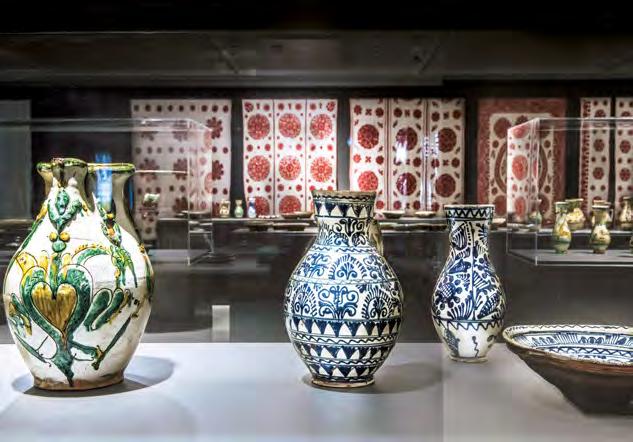





Since the opening in 2020, the Kulturstiftung Basel H. Geiger | KBH.G – a local cultural foundation – has been surprising visitors with thematically different exhibitions and ever new and innovative ways of presenting them. Each year, visitors can enjoy three curated group or solo exhibitions, with an international or a local focus. Admission and the lavishly designed accompanying publications are always free of charge. Opening hours during exhibitions: daily (except Tuesdays) from 11 am to 6 pm.
+41 61 262 01 66
«MUSIC – A CONVERSATION THROUGH SONG TITLES», 2021 «SLEEP ING WITH THE GODS», 2022 «TRANSYLVANIA’S HIDDEN TREASURES», 2022 «OF CORSE», 2022-23 «EVAPORATING SUNS», 2023Es gibt Orte, denen wohnt ein Zauber inne. An denen fühlt man sich geborgen, sicher, wohl. Der Teufelhof ist so ein Ort. Ein kleines Paradies für Menschen, die das Schöne lieben; Kunst, Kultur, gutes Essen, gehaltvollen Wein, ehrliche Gastfreundschaft. Zu Besuch in einem seelenvollen Haus voller fantastischer Geschichten.
Die Geschichte des Teufelhofs zeugt von Leidenschaft und Liebe, von Mut, Durchhaltewillen und grossen Träumen. Davon, dass sich unkonventionelle Ideen etablieren können, auch wenn sie anfänglich auf Abwehr stossen. Aber beginnen wir von vorn: Da ist das in der Kleinkunstszene aktive Ehepaar Monika und Dominique Thommy Kneschaurek, das sich nach sieben Jahren Tingeltangel sesshaft machen will. Inmitten der 1970er-Jahre eröffnen die beiden am Andreasplatz ein Theater-Café mit dem Namen «Zum Teufel». Dessen Konzept ist so einfach wie bestechend: Um unabhängig zu sein von Subventionen, soll das Café tagsüber genug Einnahmen für die abendlichen Theaterproduktionen generieren.
Die Erwartungen sind hoch, Monika Thommy, von Anfang an für den gastronomischen Teil verantwortlich, ist motiviert. Die leidenschaftliche Hobbyköchin kocht einfache Suppen und Eintöpfe, serviert Birchermüesli und backt Kuchen im Akkord, um genügend Geld für das abendliche Theaterprogramm zu erwirtschaften. Das Konzept geht auf: Monika Thommys bodenständige Küche findet Anklang, das unkonventionelle Theaterprogramm von Ehemann Dominique ebenfalls. Nach einigen Jahren drängt sich der Wunsch nach einem grösseren Theater mit mehr Publikum auf. Zudem wollen die beiden nun auch raumgreifende Kunst erlebbar machen. Sie träumen von kunstvoll inszenierten Räumen, in denen gewohnt werden kann. Ein Kunst- und Kulturhotel – das wärs!

Den Ort dafür finden sie am Leonhardsgraben. Da steht ein Gebäude seit 13 Jahren leer, hat ein kaputtes Dach und feuchte Böden, doch die Thommys wissen sofort: Das ist unser Haus. Über sechs Jahre lang kämpft das Ehepaar fortan darum, eine Bewilligung für ihr Gast- und Kulturhaus zu erhalten. Doch scheinbar alle haben sich gegen sie verschworen. Die Anwohnenden, weil sie sich vor einem linken Zentrum, vor Drogen und Prostitution fürchten. Andere Wirte und Hoteliers scheuen die Konkurrenz. Bis vor Bundesgericht wird prozessiert, dann kann der Umbau endlich beginnen. Die während der Sanierung entdeckten alten Stadtmauern – ein archäologischer Fund, der für die Öffentlichkeit zugänglich gemacht werden muss – kosten die Thommys nach dem langjährigen Bewilligungs-Kampf ein Lächeln.
Am 28. April 1989 feiert der Teufelhof Eröffnung. Acht kunstvoll gestaltete Zimmer sind bezugsbereit. Das heutige Zimmer 9 bewohnen die Thommys. Im Theater präsentiert Joachim Rittmeyer eine Uraufführung. Im Restaurant Bel Etage serviert der bereits damals renommierte Küchenchef Michael Baader seine Kreationen. Doch stop – hier müssen wir noch einmal zurück. Dass Michael Baader bis heute im Teufelhof kocht, ist nämlich eine fantastische Geschichte ...

Monika Thommy, die sich bereits im Theater-Café immer intensiver mit kulinarischen Themen auseinanderzusetzen beginnt – wohl auch, weil ihr die aufkommende Nouvelle Cuisine so gar nicht gefällt – bekommt ein Kochbuch in die Hände, dessen Gerichte sie begeistern. Eines Nachts träumt sie vom zukünftigen Küchenchef ihres zukünftigen Kultur-Hotels. Es ist Michael Baader, einer der Autoren eben dieses Kochbuches, der ihr wegen seinem Gugelhupf-Rezept mit Gänseleber bestens in Erinnerung ist.
Monika Thommy schreibt ihm einen Brief, es entsteht ein Briefwechsel, Michael Baader besucht die Thommys am Andreasplatz, schaut sich die Ruine, die dereinst sein Gourmetrestaurant werden soll, an – der Rest ist Geschichte. Einen Michelin-Stern und 16 Gault Millau-Punkte hat das Bel Etage im Teufelhof heute. Michael Baader ist ein Traumkoch im wahrsten Sinne des Wortes.
Die Thommys ihrerseits gehen 2009 in Pension und übergeben ihr Lebenswerk an Raphael Wyniger. Er, feinfühliger Hotelier und langjähriger Teufelhof-Fan, kennt das Haus seit seinem Service-Praktikum als 24-jähriger Student der Hotelfachschule. Mit der damaligen Rezeptionistin hat er heute drei Kinder. «Bereits als ich zum ersten Mal hier hereinspaziert bin, habe ich gespürt; das ist ein gutes Haus», erzählt er. Ruhig und besonnen berichtet er von der fortschrittlichen Führungskultur der Thommys, von deren tollem Konzept, dem stets innovativen Angebot und «dem wahrscheinlich besten Küchenchef der Welt». Und er ist sich sicher: «Das ist mein Ort.»
Nach seinem Praktikum im Teufelhof arbeitet Raphael Wyniger bei Pricewaterhouse Coopers, später bei Basel Tourismus. «Doch ich kam immer wieder zum Teufelhof zurück», berichtet er schulterzuckend. Es scheint, als hätte er sich dem Zauber des Hauses unmöglich entziehen können. Und dann, er ist gerade mal 31, bieten ihm die Thommys an, den Teufelhof zu übernehmen. «Ich war naiv, habe das Ganze völlig unter- und mich total überschätzt», gibt er heute zu. «Die ersten zwei Jahre überstand ich nur mit Glück – und mit Beharrlichkeit.» Selbst als ihn die Banken zwingen, das Teufelhof-Konzept zu hinterfragen, weigert er sich. «Ich war immer überzeugt vom Kern des Hauses!» Und er ist es bis heute. Sein ganzes Tun, die 2015 gegründete Wyniger-Gruppe mit allen Restaurants, Bars, der Brauerei, diene am Ende nur einem Zweck: dem Erhalt des Teufelhofs. Und so kommt sein Wunsch für die Zukunft auch nicht überraschend: «Die Seele des Hauses soll erhalten bleiben.» Zu dieser Seele gehört bis heute Chefkoch Michael Baader. «Der servierte Monika Thommy an ihrem letzten Arbeitstag übrigens endlich und zum ersten Mal den Gugelhopf, weswegen sie einst von ihm geträumt hatte», lächelt Raphael Wyniger. Seine achtsame Art über den Teufelhof zu sprechen, lässt keine Zweifel: Er liebt dieses Haus mit seiner kuriosen, fantastischen und herzerwärmenden Biografie. Und er wird alles dafür tun, um die Geschichte an diesem besonderen Ort weiterzuschreiben. Auf Teufel komm raus.
DER TEUFELHOF BASEL
Leonhardsgraben 47–49 – teufelhof.com
Mitten in der Altstadt wurde der Teufelhof aus zwei historischen Stadthäusern zusammengelegt. Er beinhaltet heute ein Hotel, ein Theater, das Restaurant Atelier, das Restaurant Bel Etage, eine Bar, ein Café, eine Brauerei sowie einen Weinladen. Im Galeriehotel finden wechselnde Ausstellungen statt. Die neun Kunstzimmer sind bewohnbare Kunstwerke, die in unregelmässigen Abständen neu gestaltet werden. Das Theater umfasst 100 Plätze und zeigt pro Woche drei Kabarett- oder Satire-Vorstellungen. Im «Bauch» des Teufelhofs befindet sich der Archäologische Keller, eine Vorzeigestation für die Vermittlung historischer Bausubstanz in Basel mit alten Basler Stadtmauern aus dem 11. und 13. Jahrhundert.
«Die Seele des Hauses soll erhalten bleiben.»
Some places have a charm all their own. Where you feel sheltered, secure, comfortable. The Teufelhof is one of those places. A corner of paradise for lovers of beauty; art, culture, good food, full-bodied wines and genuine hospitality. A visit to a house full of soul and stunning stories.
The Teufelhof’s story is one of passion and love, courage, perseverance and big dreams. It shows that unconventional ideas can take root, even if they are greeted with resistance at first. But let’s start at the beginning: a married couple, Monika and Dominique Thommy-Kneschaurek, who worked in cabaret, but after seven years of song and dance wanted to settle down in one place. In the middle of the 1970s, the two of them opened a theatre-cum-café at the Andreasplatz which they called “Zum Teufel” (to the devil with it). The concept was both simple and fascinating: to avoid any dependency on subsidies, the café was to generate enough income during the day to cover the theatrical performances in the evening.
The expectations were high, Monika Thommy, who was responsible for the gastronomy right from the start, highly motivated. As a passionate amateur chef, she cooked simple soups and stews, served up Birchermüesli and baked cakes without pause, in order to generate enough money for the theatrical program in the evening. Their plan worked: Monika Thommy’s down-to-earth cooking was popular, as was her husband Dominique’s offbeat theatre program. After a few years it became clear that what they really wanted was a larger theatre and a larger audience. But they also wanted to make art come alive for their guests – in three dimensions. They dreamt of aesthetically staged rooms which could actually be lived in. An hotel for the arts and culture – perfect!
They found the place they were looking for on the Leonhardsgraben. One of the buildings there had stood empty for 13 years, the roof was leaking and the floors were damp, but the Thommys were sure immediately: This is the house for us. The couple spent the next six years fighting for a permit for their arts and culture hotel. Sometimes it felt as though the whole world was conspiring against them. The neighbours, because they were scared it was going to be a left-wing centre, or be full of drugs and prostitutes. Other restaurateurs and hotel owners were worried about the competition. They had to take the case all the way to the Federal Supreme Court before the reconstruction work could finally begin. The ancient city walls, which came to light during the renovation work, were an archaeological find which had to be made accessible to the general public – but this elicited little more than a weary smile from the Thommys, when compared to the long years of fighting for building permission.
On 28 April 1989, the Teufelhof could finally celebrate its opening. Eight artfully designed rooms were ready for the guests. The Thommys lived in what is now room number 9. Joachim Rittmeyer staged a premiere in the theatre. And in the Bel Etage restaurant Michael Baader, already a renowned chef at that point, served up his creations. But wait a minute – we have to go back a step again here. The fact that Michael Baader is still the chef at the Teufelhof today, is of course an incredible story ...
Monika Thommy, who had begun to delve into culinary matters more and more intensely while working at the theatre-café – probably partly because she was not a great fan of the nouvelle cuisine gaining popularity at the time – found a cookery book with recipes that enchanted her. Then one night she dreamt about the future chef of her future cultural hotel. And that was Michael Baader, one of the co-authors of this cookery book. He had stuck firmly in her head because of his recipe for a Gugelhupf with goose liver. Monika Thommy wrote him a letter, which led to an exchange of letters; then Michael Baader came to visit the Thommys at the Andreasplatz, went to look round the ruin of a house which was one day to house his gourmet restaurant – and the rest is history. The Bel Etage in the Teufelhof now has a Michelin star and 16 Gault Millau points. Michael Baader is a dream chef in the truest sense of the word.

“The minute I walked in here, I could sense that this was a great establishment.”
The Thommys, for their part, retired in 2009 and handed over their life’s work to Raphael Wyniger. He, a tactful hotelier, had been a long-term fan of the Teufelhof, since he had got to know it during his service-internship there as a 24year-old student of hotel management. He now has three children with his wife, who was the receptionist working there at the time. “The minute I walked in here, I could sense that this was a great establishment”, he tells us. Perfectly relaxed, he calmly recounts the Thommy’s progressive management style, the fabulous concept they had developed, the constant innovation in what they offered and “probably the best chef in the entire world”. And of one thing he is quite certain: “This is the place for me.”
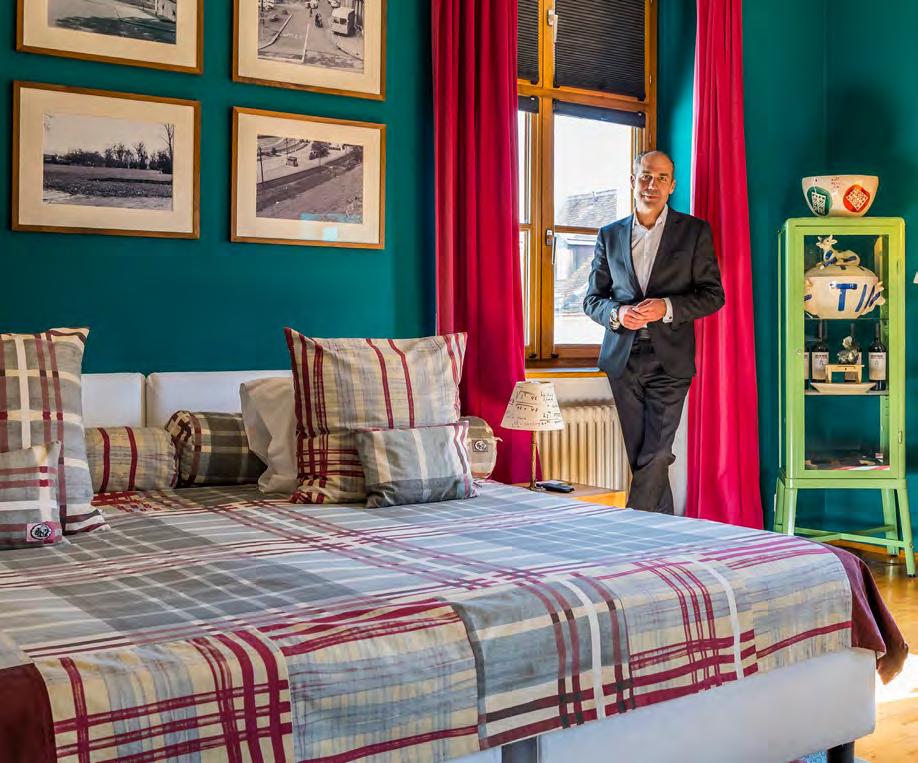
After completing his internship at the Teufelhof, Raphael Wyniger worked for Pricewaterhouse Coopers, then Basel Tourism. “But I kept coming back to the Teufelhof”, he tells us shrugging his shoulders. It seems he couldn’t possibly escape the spell of the place. And then, just as he turned 31, the Thommys asked him to take over the Teufelhof. “I was very naïve, completely underestimated the whole thing and completely overrated myself”, he can now admit. “I only survived the first two years with a lot of luck and perseverance.” But when the banks tried to force him to reconsider the concept behind the Teufelhof, he refused. “I always believed in the quintessence of this place!” And he still does today. Everything he has done, founding the Wyniger Group in 2015 with the restaurants, bar, the brewery, serves just one purpose: to preserve the Teufelhof. So his wish for the future is no big surprise: “I want the spirit of this establishment to be preserved.” Part of this spirit, these days, is the head chef Michael Baader. “On her last day at work he finally, for the first time, served Monika Thommy the Gugelhopf that had once inspired her to dream about him”, smiles Raphael Wyniger. The observant way he talks about the Teufelhof leaves us in no doubt: He loves this place, with its quirky, fanciful and heart-warming biography. And he will do everything possible to ensure the story of this incredible place continues. Come hell or high water.
In the heart of Basel’s old town, the Teufelhof was created by merging two historical townhouses. It consists of a hotel, a theatre, two restaurants, the Atelier and the Bel Etage, a bar, a café, a brewery and a wine cellar. Temporary exhibitions are held in the Galerie hotel. The nine rooms of the Kunst hotel are habitable works of art, redesigned at irregular intervals. The theatre seats 100 and shows three cabaret or satire performances a week. The archaeological cellar, in the ‘belly’ of the Teufelhof, is a showcase of Basel’s historical structures, with remnants of the city wall dating to the 11th and 13th centuries.
teufelhof.com
Raphael Wyniger in his favourite room: an artistic room designed by Dieter Meier.“I want the spirit of this establishment to be preserved.”
Die Basler Bierbrauerei-Szene ist beeindruckend. Entdecke die verschiedenen Basler Biere, die du auch gleich vor Ort in der dazugehörigen Bar oder Restaurant geniessen kannst.

BRAUBUDEBASEL
Oetlingerstrasse 84 – braubudebasel.ch
Die BrauBudeBasel ist ein echtes Bijou der Kleinbrauerei-Szene. Die früheren Räumlichkeiten einer Bäckerei wurden zu einer Brauerei umfunktioniert, die Liebhaber-Biere in Kleinstmengen produziert. Pünktlich zum Feierabend öffnet die dazugehörige Birreria jeweils die Zapfhähne und serviert feine Apéro-Plättli. Prost!
The BrauBudeBasel is a real bijou of the microbrewery scene. The premises of this former bakery have been converted into a brewery, producing beers for connoisseurs in very small quantities. Just as the working day ends, the brewery’s beer parlour opens its taps and serves lovely plates of appetizers too. Cheers!
In der Ueli-Brau-Bar wird die regionale Brauszene gefeiert. In erster Linie das hauseigene Ueli Bier der 1974 im Nebenhaus gegründeten Brauerei Fischerstube. Doch auch weitere Bierkreationen aus der Region werden in der Ueli-Brau-Bar ausgeschenkt. Hier lernst du die Basler Biervielfalt in modernem Ambiente kennen und schätzen.
At the Ueli-Brau bar the local brewing scene is feted. First and foremost, their own, in-house Ueli beer from the Fischerstube brewery next door, founded in 1974. But other beers brewed in the region are also served in the bar. You can get acquainted with a whole range of Basel’s beers in the modern ambience of the Ueli-Brau bar.
MATT & ELLY BREWERY & KITCHEN
Erlenmattstrasse 93 matt-elly.com
Die trendige Adresse im Erlenmatt-Quartier überzeugt neben der internationalen Küche mit eigener Brauerei. Die grossen Braukessel befinden sich inmitten des Restaurants. Das Handwerk ist somit bei jedem Schluck spürbar. Von fruchtig-leicht bis hopfig-vollmundig wirst du bei Matt & Elly mit allerlei kreativen Bierkreationen verwöhnt.

This trendy address in the new Erlenmatt district is popular thanks to its international cuisine, but also because it has its own brewery. The huge brewing kettles are located in the middle of the restaurant. So the craftsmanship is felt right there at every sip. From light and fruity to full-bodied with hops, you’ll be treated to all kinds of creative beers at Matt & Elly.

Frankfurt-Strasse 21 birtel.ch
Birtel – das ist von Hand gebrautes Craft-Bier mit Einstellung. Die Kleinbrauerei zählt zu den Geheimtipps der lokalen Szene und setzt sich zum Ziel, eigenen Hopfen und eigene Braugerste anzupflanzen. Die Birtel-Fahrbar an exklusiver Location auf den Gleisen des Industrieareals Dreispitz ist sicherlich der coolste Ort, um ein Birtel zu geniessen.
Hand-brewed craft beer with attitude. This micro-brewery is an insider tip on the local scene and aims to grow its own hops and brewer’s barley. The Birtel Fahbar, a train carriage exclusively located on the tracks of the industrial area at the Dreispitz is definitely the coolest place to enjoy a Birtel.

Voltastrasse 30 voltabraeu.ch
Volta Bräu steht nicht nur für geschmackvolles Craft-Bier, welches nach traditionellem Handwerk hergestellt wird. Volta Bräu steht ebenso für eine lebhafte AfterworkKultur mitten im weltoffenen St. Johanns-Quartier. Das urbane Ambiente gepaart mit dem Charme der Brauerei machen dieses Brewpub zu einem echten In-Place. Das Volta Bräu wird ausserdem im Consum, im Nomad und im Krafft serviert.

Volta Bräu is not just about a tasty craft beer produced with traditional craftsmanship. Volta Bräu is also about a lively, after-work culture in the middle of the cosmopolitan district of St. Johann. The urban ambience coupled with the brewery’s charm have made this brewpub a real in-place. The beer from Volta Bräu is also served at the Consum, Nomad and Krafft restaurants.
Binningerstrasse 101 in Allschwil kitchenbrew.ch
Entstanden in einer Küche mitten in der Innenstadt von Basel, ist Kitchen Brew inzwischen in einer früheren Druckerei mit Altindustriecharme in Allschwil zuhause. Hier werden die innovativen, kraftvollen und hochwertigen Biere gebraut. Zudem öffnet die Brauerei regelmässig ihre Türen, um die Biere gleich vor Ort im Offenausschank zu probieren. Dazu gibt’s lecker Pizza!
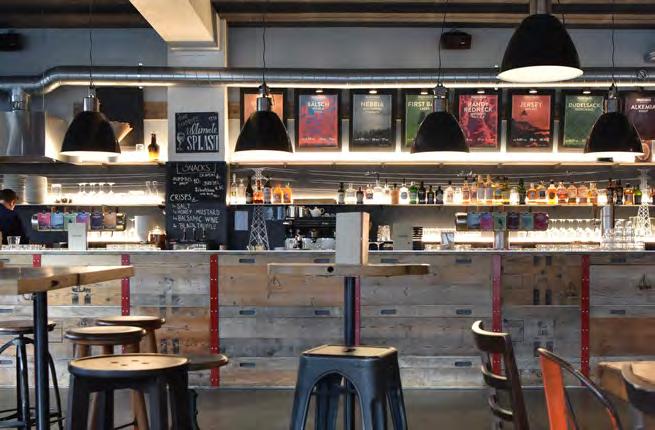

It started off in a kitchen in Basel’s city-centre, but in the meanwhile Kitchen Brew has moved to an old printing plant with vintage industrial charm in Allschwil. This is where their innovative, potent, high-quality beers are brewed. But the brewery also regularly throws open its doors so you can taste the beer on tap. And there’s delicious pizza to go with it!
Der Stadtmauer Brauer ist das hauseigene Bier des Gast- und Kulturhauses Der Teufelhof Basel. Was viele nicht wissen: Der Teufelhof birgt ein archäologisches Highlight. Unter dem Gebäude befinden sich alte Stadtmauern aus dem 11. und 13. Jahrhundert. Diese geben der hauseigenen Brauerei, die entlang den alten Gemäuern untergebracht ist, ihren Namen. Die süffigen Biere gibt’s im Teufelhof selbst und in weiteren Betrieben der Gastro-Gruppe zu geniessen.
The Stadtmauer Brauer is the in-house beer of the Guesthouse and Cultural Hotel The Teufelhof Basel. What a lot of people don’t know is that the Teufelhof conceals an archaeological highlight. Beneath the building lie the old city walls, dating to the 11th and 13th centuries. And they are the namesake of the in-house brewery, housed along the ancient masonry. You can drink the tasty beer in the Teufelhof itself but also in subsidiaries of the restaurant group.
Seit 1886 sorgt die Christoph Merian Stiftung in Basel dafür, dass das reiche Erbe von Christoph und Margaretha Merian im philanthropischen Sinne des Gründerpaares Verwendung findet. Welche Rolle der kreativ-pulsierende Dreispitz dabei spielt, was ihn mit dem stillen Naturparadies der Merian Gärten verbindet und welche Themen die Stiftung heute beschäftigen, erklärt Stiftungsdirektor Beat von Wartburg.
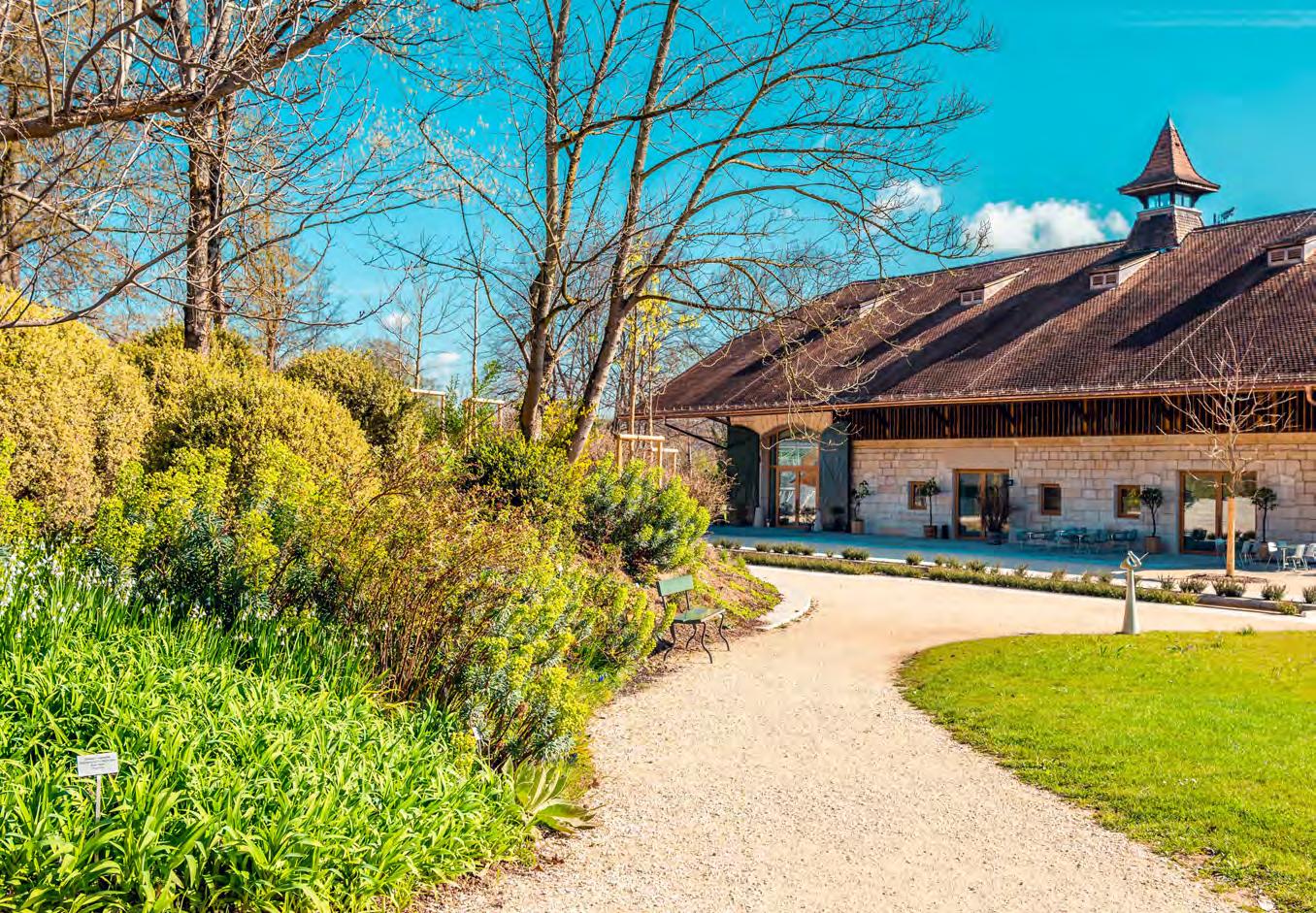
Text & Bilder: Janine Wagner
Diese Geschichte beginnt mit Hochzeitsglocken. Sie läuten im Oktober 1824 im St. Jakobs-Kirchlein für den 24-jährigen Christoph Merian Junior und die 18 Jahre alte Margaretha Burckhardt. Er: Sohn eines vermögenden Kaufmanns. Sie: Tochter eines reichen Textilfabrikanten. Die Hochzeit der beiden stärkt die Verbindung zweier bedeutender Familien des Basler Patriziats. Das Hochzeitsgeschenk, welches Christoph und Margaretha erhalten, kann sich sehen lassen: Christoph Merian Senior vermacht dem jungen Paar das über 56 Hektaren grosse Landgut Brüglingen südöstlich von Basel, die heutigen Merian Gärten. Fortan reisen die jungen Merians jeweils für die Sommermonate mit vollbepackter Kutsche und Personal «aufs Land» in die Villa Merian.
Bis heute steht das unterdessen denkmalgeschützte Herrschaftshaus in den öffentlichen Merian Gärten, einer üppigen Oase, die man an dieser turbulenten Ecke der Stadt unweit von Industrie und Autobahn niemals erwarten würde. «Ländlich» ist es hier tatsächlich nur noch in den botanischen Gärten rund um die Villa. Hier gedeihen Fuchsien, Clematis, Pfingstrosen und rund 1500 Irissorten. Hier leben Schafe, Hühner und Kaninchen. Müde und gestresste Städterinnen und Städter tanken inmitten von Grün Ruhe und Kraft. Geräuschkulisse: zwitschernde Vögel und summende Bienen. Von den nicht weit davon vorbeidonnernden Lastwagen ist in den Merian Gärten erstaunlicherweise kaum etwas zu hören.
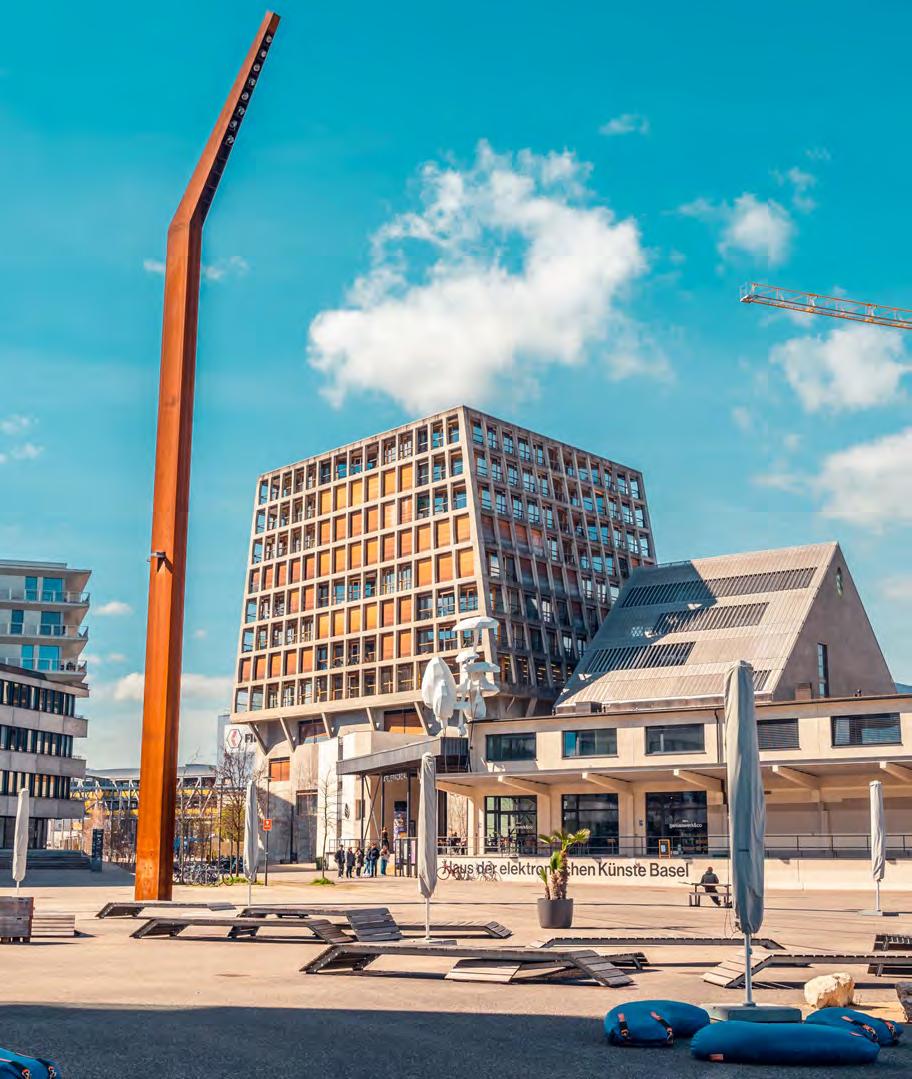
Vom landwirtschaftlichen Grossbetrieb zum Industrie- und Handelsmekka
Zu Zeiten Christoph Merians waren Hektik und Lärm rund um seine Sommerresidenz freilich noch Fremdworte. Ausserhalb der Stadt grasten Kühe, wurde Weizen- und Roggen angebaut. Die Landwirtschaft interessierte auch den jungen Merian. Neben seiner kaufmännischen hatte er eine agronomische Ausbildung. Um einen landwirtschaftlichen Grossbetrieb aufzubauen, erweiterte er sein Land deshalb bald um den Dreispitz, das Ruchfeld, St. Jakob und Neue Welt – kluges Wirtschaften und glückliche Erbschaften machten es möglich. Dass aus seinem Boden später Kies für den Strassenbau in Basel gefördert wurde, erlebte er nicht mehr. Auch nicht, wie sein Dreispitz zum namhaften Industrie- und Handelsstandort und zum Knotenpunkt des internationalen Güterverkehrs wurde.
Ob ihm diese Entwicklung gefallen hätte? Vermutlich schon, denn, so betont Beat von Wartburg, Historiker und Direktor der Christoph Merian Stiftung: «Christoph Merian war ein unternehmerisch denkender Mann, stark verwurzelt mit seiner Heimatstadt, für die er sich zeitlebens einsetzte, die er unterstützte und förderte.» Gemeinsam mit seiner Frau Margaretha fasste er den Entschluss, einen grossen Teil seines Vermögens der Stadt Basel zu vermachen, damit es für wohltätige Zwecke verwendet werden kann. Die Merians hatten keine Kinder. Als Christoph Merian 1858 starb, übertrug er sein Vermögen daher erst einmal seiner Frau. «Ein für damalige Zeiten unglaublich fortschrittlicher Akt und ein Zeichen grossen Vertrauens», so Beat von Wartburg. «Die Baslerinnen waren nämlich bis 1876 noch nicht rechtlich mündig.»
Alles zum Wohle der Baslerinnen und Basler Bemerkenswert ist zudem, was Margaretha Merian in den Jahren nach dem Tode ihres Mannes leistete. «Sie verwaltete das Vermögen, vermehrte es und nutzte es für philanthropische Taten», weiss Beat von Wartburg. So wurde zum Beispiel die von den Merians finanzierte Kirche St. Elisabethen fertiggestellt und der Stadt übergeben. «Es ist absolut aussergewöhnlich, was dieses Ehepaar in und für Basel getan hat. Ungeachtet der Prinzipien des «Basler Daigs» haben die beiden ihr Vermögen aus der Familienerbfolge herausgelöst und der öffentlichen Hand anvertraut.» Elf Millionen Franken und 300 Hektaren Land gingen nach Margarethas Tod 1886 an die Stadt Basel über. Zur Verwaltung wurde die Christoph Merian Stiftung eingesetzt, die für die «Linderung der Noth und des Unglückes» und die «Förderung des Wohles der Menschen» sorgen sollte.
«Diese offene Formulierung zeugt von der enormen Weitsicht und Klugheit Christoph Merians», ist Beat von Wartburg überzeugt. «Der von ihm formulierte Stiftungszweck ist für uns bis heute verbindlich und handlungsleitend. Die Stiftung versteht sich dabei als soziale Investorin, als eine Förderstiftung, die ihre Partnerorganisationen auf Augenhöhe unterstützt. Wir fördern nach klar definierten Kriterien und pflegen grösstmögliche Transparenz. Wir handeln bedarfsorientiert, setzen das Geld da ein, wo es gebraucht wird – aktuell sind wir hinsichtlich der Klimathematik gefordert, zeitgemässe und innovative Lösungen zu finden.»


Der Zauber des Unperfekten
Bei der Umsetzung des Stiftungszweckes spielen die Erträge aus dem Dreispitz, dessen Grundeigentümerin die Christoph Merian Stiftung nach wie vor ist, eine wesentliche Rolle. Das historische Stammland von Christoph Merian, das Land auf dem einst Kühe grasten, ist heute ein pulsierendes Universum voller kreativ unperfekter Schönheit. Auf einer Fläche von 50 Hektaren werden Muskeln gestählt, Kreativköpfe ausgebildet, Radiosendungen produziert, Bleche zu Instrumenten gebogen und Reststoffe verkauft. Wer ein Auge hat für unkonventionelle Stadtschönheit, wer sich freut über Graffitis neben stillgelegten Gleisen, Minigolf neben schicker Wohnung, Hochbeet neben sozialer Einrichtung, Brocki neben Kunst im öffentlichen Raum, ist hier genau richtig. Das Gebiet am äussersten Zipfel der Stadt verändert sich laufend, bestätigt auch Beat von Wartburg: «Die Industrie ist ausgezogen, die Bahn stillgelegt, das produzierende Gewerbe verlagert die Produktion immer mehr ins Ausland. Wir müssen schauen, dass wir das Areal in die Zukunft bringen.»
«Der von Christoph Merian formulierte
Stiftungszweck ist für uns bis heute verbindlich und handlungsleitend.»
Die Stiftung setzt auf Mischnutzung. Am Dreispitz Nord ist eine grosse Transformation mit rund 800 Wohnungen geplant. «Unsere Vision ist es, eine Verdichtung hinzubekommen bei gleichzeitiger Schaffung von möglichst viel Frei- und Grünraum», so Beat von Wartburg. «Anstatt in der Agglomeration ständig Grünraum zu überbauen, müssen wir den Stadtraum komprimieren. Dies jedoch in einem erträglichen Mass, ohne die bestehende Nutzung zu verdrängen.» Während die Strassennamen am Dreispitz von den Zeiten als Zollfreilager und Gewerbegebiet erzählen und davon, dass hier einst die grossen europäischen Handelsplätze von Neapel bis Oslo und von Brüssel bis Lyon zusammenkamen, diskutiert man aktuell über die Zukunft der Stadt. Intensive Bodennutzung, bezahlbare Gewerbe- und Wohnflächen, Schaffung von Arbeitsplätzen und Begegnungszonen sind die Schlagworte. Hundert Meter weiter östlich blühen derweil die Rhododendren im Garten von Christoph Merians einstiger Sommerresidenz.
Was Beat von Wartburg ihm zeigen würde, könnte er ihm einmal begegnen? «Den Dreispitz natürlich», antwortet er, ohne zu zögern. «Christoph Merian war ja nicht nur Agronom, sondern auch ein cleverer Kaufmann. Er wusste genau, dass es eine weitsichtige Vermögensbewirtschaftung braucht, um Philanthropie zu finanzieren. Und ich würde ihm zeigen, dass wir jetzt gerade seine Villa in den Gärten sanieren, damit sie wieder in neuem, altem Glanz erstrahlt.»
Seit 1886 fördert die Christoph Merian Stiftung Projekte in der Stadt Basel. Sie unterstützt soziale und kulturelle Institutionen wie die Gassenküche, den Verein Schwarzer Peter, die Robi-Spiel-Aktionen, das HeK oder das Literaturhaus, fördert Projekte zur Minderung von Notlagen von Sans-Papiers oder psychisch kranken Menschen. Überdies unterstützt die Stiftung kreative Lese- und Schreibförderung bei Kindern, die ökologisch sinnvolle Begrünung von Basler Dachflächen und sie kümmert sich um die Sanierung erhaltenswerter Quartiere wie das Dalbeloch oder um die Schaffung neuer Freiräume. Aktuell werden rund 200 Projekte gefördert. Die Stiftung hat 100 festangestellte Mitarbeitende und unterstützt Projekte in der Stadt Basel jährlich mit rund 15 Millionen Franken.
cms-basel.ch / dreispitz.ch
Erst neulich wurde ein wesentlicher Teil der Merian Gärten, genauer Vorder Brüglingen, von der Christoph Merian Stiftung neu gestaltet, Wege und Pflanzensammlungen wurden neu angelegt. Die grosse Scheune wurde vom renommierten Basler Architekturbüro Miller und Maranta umgebaut und beherbergt das neue Restaurant Iris. Gleich nebenan ist ein toller Spielplatz für kleine Entdeckerinnen und Entdecker entstanden und in den Gewächshäusern sieht man die Arbeit der Gärtnerinnen und Gärtner. Die Villa Merian ist 2023 samt Restaurant wegen Umbau geschlossen. Die Merian Gärten sind täglich von 8 Uhr bis Sonnenuntergang geöffnet und kostenlos zugänglich.
meriangärten.ch / restaurant-iris.ch

Established in 1886, the Christoph Merian Foundation in Basel has been ensuring that the abundant legacy bequeathed by Christoph and Margaretha Merian is disposed of in the philanthropic spirit of its founders ever since. The Director of the Foundation, Beat von Wartburg, explains the role of the vibrant and creative Dreispitz area, what links it with the peace and verdant idyll of the Merian Gardens, and the issues confronting the Foundation these days.

The story commences with wedding bells. In October 1824 the bells of the little Church of Saint James were ringing for the 24-year-old Christoph Merian Junior and his 18-year-old bride, Margaretha Burckhardt. He was the son of an affluent merchant and she the daughter of a wealthy textile manufacturer. The couple’s marriage strengthened the ties between two of Basel’s most important patrician families. The wedding gift Christoph and Margaretha received from Christoph Merian Senior was impressive: He handed over the country estate of Brüglingen to the young couple. Covering an area of more than 56 hectares, it lies to the south-east of Basel, and is now known as the Merian Gardens. From then on, the young Merians set off every year with a well-packed carriage and their staff, to spend the summer months ‘in the country’ at the Villa Merian.
The manor house, which is now a protected historical monument, still stands in the Merian Gardens, which are now open to the public; they form a luxuriant and wholly unexpected oasis in this turbulent corner of the city, not far from an industrial area and the motorway. Indeed, the only ‘rural’ area still to be found round about is the botanical gardens surrounding the villa. Fuchsias, clematis, peonies and almost 1,500 varieties of iris flourish here. The gardens are also home to sheep, chickens and rabbits. The city’s inhabitants, exhausted and stressed, come here to replenish their reserves and find peace in the verdant surroundings. The sounds to be heard: twittering birds and the hum of bees. Strangely enough, in the Merian Gardens, the lorries thundering by not so far away are almost imperceptible.
From a large-scale agricultural enterprise to a manufacturing and trading hub
Of course, in Christoph Merian’s era, there was no hint of noise or a hectic pace anywhere near his summer residence. Outside the confines of the city, cows grazed and wheat and rye were cultivated. The young Merian was also interested in agriculture. In addition to his mercantile training, he had studied agronomy. In order to build up a large-scale agricultural enterprise he increased the size of his estate, adding to it the Dreispitz, the Ruchfeld, the St. Jakob and the Neue Welt areas – all possible thanks to his shrewd management and providential inheritances. He did not live long enough to witness gravel for the construction of Basel’s roads being extracted from his land. Nor did he see how his Dreispitz transformed into a major centre of industry and trade as well as a hub of international freight services.

“Our vision is to achieve urban densification but at the same time to create as much public green space as possible.”
Would he have approved of these developments? The answer is probably yes, because as Beat von Wartburg, an historian and the Director of the Christoph Merian Foundation points out: “Christoph Merian was a man with an entrepreneurial mindset, with strong ties to his city, which he championed, supported and patronized throughout his entire life.” Together with his wife, Margaretha, he resolved to bequeath a large proportion of his estate to the City of Basel, and that the money should be used for charitable purposes. The Merians had no children of their own. When Christoph Merian passed away in 1858, he first conferred his estate on his wife. “For the time, this was an extraordinarily progressive act and a sign of great trust”, explains Beat von Wartburg. “Because the women of Basel were not legally emancipated until 1876.”
All for the good of the people of Basel Margaretha Merian likewise achieved remarkable results in the years following her husband’s death. “She managed his estate, augmented it and used the funds for philanthropic deeds.” explains Beat von Wartburg. For example, the Church of St. Elisabeth, funded by the Merians, was completed and presented to the city. “What this couple achieved in and for Basel is completely exceptional. Disregarding the guiding principle of the “Basel Daig”, a circle of Basel’s old-wealth families, this couple removed their fortune from their families’ line of inheritance and entrusted it to public ownership.” Following Margaretha’s death in 1886, eleven million francs and 300 hectares of land were handed over to the City of Basel. The Christoph Merian Foundation was established to administer the estate with the stated aim of “alleviating poverty and misfortune” and “fostering the welfare of the people”.
“Such liberal wording bears witness to Christoph Merian’s tremendous foresight and wisdom.” Beat von Wartburg is quite convinced of this.
“The purpose of this Foundation, as formulated by him, is still the binding directive for our work today. In this sense, the Foundation sees itself as a socially aware investor, as a charitable foundation supporting its partners as equals. We provide funding in accordance with clearly defined criteria and cultivate the greatest possible transparency. We react according to need, and invest money where it is most needed – we are currently facing the challenge of finding up-to-date and innovative solutions to deal with the issues resulting from climate change.”

A significant area of the Merian Gardens, or more precisely the Vorder Brüglingen, has recently been redesigned by the Christoph Merian Foundation; its paths and plant collections laid afresh. The great barn, converted by the renowned Basel architect’s office, Miller and Maranta, now houses a new restaurant, the Iris. A wonderful play area for young explorers has been created right next to the barn and you can espy the gardeners’ work through the windows of the greenhouses. The Villa Merian, including its restaurant is closed in 2023 of because of renovation work. The Merian Gardens are open to the public, free of charge, seven days a week, from 8 a.m. in the morning till sunset. meriangärten.ch / restaurant-iris.ch
The revenue from the Dreispitz area, the freehold of which still belongs to the Christoph Merian Foundation, plays a crucial role in the realisation of the Foundation’s objectives. Nowadays, the erstwhile heartland of Christoph Merian’s estate, the land on which cows once grazed, is a bustling universe full of unperfected, creative beauty. On this 50-hectare plot, muscles are steeled, creative minds cultivated, radio programmes produced, brass curved in to instruments, and remnants sold off. Anyone with an eye for unconventional urban charm, who enjoys the sight of graffiti along abandoned railway tracks, mini-golf next to smart apartment blocks, raised vegetable beds next to social organisations, second-hand shops next to art in public spaces, has come to the right place here. This area, the furthermost corner of the city, is in constant flux, as Beat von Wartburg can confirm: “The industrial sector has moved away, the railway lines are disused, and the manufacturing industry is transferring more and more of its production abroad. We have to make sure that we steer this area into the future.”
The foundation is committed to mixed use of the area. A huge transformation is planned for Dreispitz North, where around 800 new apartments are planned. “Our vision is to achieve urban densification but at the same time to create as much public green space as possible”, explains Beat von Wartburg. “Instead of building over more and more of the greenbelt communities around the city, we should condense the use of land in the city itself. But we have to do so only to a tolerable extent, without driving away the current users.” The names of the roads in the Dreispitz are a reminder of its era as an area of duty-free warehouses and an industrial estate; that once upon a time, the greatest European trading centres, Naples and Oslo, Brussels and Lyon congregated here. Now it is the future of the city itself that is the topic of conversation. An intensive use of the area available, affordable commercial and residential properties, the creation of places for work and social encounters are the key concepts. But in the meanwhile, a hundred metres further east, the rhododendrons in the garden of Christoph Merian’s old summer residence are in full bloom.
What would Beat von Wartburg show him, if he had the opportunity to meet him just once? “Well, the Dreispitz area of course”, he replies without a moment’s hesitation. “Christoph Merian was not just an agronomist; he was also a very smart businessman. He was very well aware of the fact that he needed a farsighted management strategy for his fortune, if it was to finance his philanthropic aims. And I would also show him that we are in the process of completely renovating his villa in the middle of the gardens, to restore it to its erstwhile glory.”
The Christoph Merian Stiftung has been supporting projects in the city of Basel since 1886. It funds social and cultural institutions such as the soup kitchen; the Schwarzer Peter Association (support for marginalised groups) and the Robi adventure playgrounds and activities, as well as the HeK (House of Electronic Arts) and the Literature House; it also supports projects to alleviate the hardships suffered by undocumented migrants and people with mental health issues. The Foundation sponsors creative reading and writing support for children, the eminently ecological greening of Basel’s flat roofs, and is involved in the restoration of neighbourhoods worthy of preservation, such as the Dalbeloch. It funds the creation of new open spaces. It is currently sponsoring around 200 projects. The Foundation has 100 permanent employees and an annual budget of around 15 million francs to support projects in the city of Basel.
cms-basel.ch / dreispitz.ch
Lust auf ein Experiment? Darauf, Orange mit Pink zu kombinieren oder Lila mit Gelb? Missoni mit Palmer Harding, Diane von Furstenberg mit Alberta Ferretti? Im Concept Store Dress up entdeckst du neue Labels, schmeichelhafte Schnitte und – zwischen klassischen Teilen – auch mutige Farben und Muster. Geniesst eine herzliche Beratung mit Blick auf den Rhein. Und findest garantiert einen unverwechselbaren Look.
Text & Bilder: Janine Wagner
Die positive Energie erfasst dich bei Dress up gleich auf den ersten Metern. In diesem Store scheint die Sonne selbst, wenns draussen regnet. Diese Farben! Diese Stoffe! Dieser Ausblick! Umgehend bekommt man Lust, sich allem Schwarz und sämtlichem Grau zu entledigen, um fortan nur noch in hellen Blusen, fliessenden Kleidern und bunten Blazern durch die Strassen der Stadt zu tanzen. In Turnschuhen, natürlich. Denn, so betont Annette Gasser, Inhaberin des Concept Stores: «Vor 30 Jahren hätte zwar niemand Turnschuhe zu einem Kleid oder einem Anzug getragen – aber heute sind Sneaker ein absolutes Muss!»
Es ist Annette Gassers erklärtes Ziel, die Welt ein wenig farbiger zu machen. Und sehr viel stilvoller. Die Labels, die sie anbietet, sind zum Teil nirgendwo sonst in Basel zu finden. Ihre Passion ist der Mix aus verschiedenen Brands und Stilrichtungen. Es macht sie glücklich, wenn sie ihre Kundinnen zu Neuem inspirieren kann und die sich am Ende in ihrem ganz persönlichen und individuellen Look wundervoll fühlen. Um diesen Service zu ermöglichen, ist Annette laufend auf der Suche nach neuen Labels. Oft findet sie diese auf Reisen – wie zum Beispiel die unfassbar schmeichelhaften Kleider der Designerin Hanout, die sie in Marrakesch entdeckte. Oder Odeeh, das Label eines deutschen Designer-Duos mit lauten, gewagten Mustern. Viele Labels bei Dress up kommen auch aus Frankreich und Italien – zwei Länder, für deren Mode Annette Gassers Herz besonders stark schlägt.
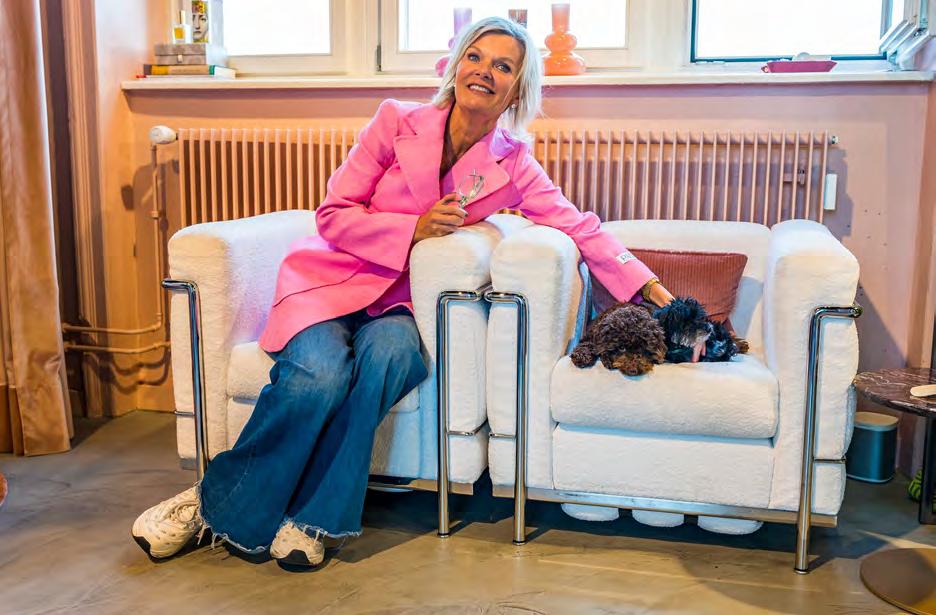
«Jetzt oder nie, habe ich mir gesagt, sonst ist es zu spät.»
Woher ihre Liebe zur Mode kommt? «Sie war immer da», erzählt Annette. Schon als sie nach ihrer KV-Ausbildung auf einer Bank jobbte, habe sie jeweils in der Mittagspause fast ihr ganzes Geld für Mode auf den Kopf gehauen. «Damals natürlich meist bei H&M – aber bereits in wilden Kombinationen ...» Dass die Bank nicht ihre Welt war, wusste sie bald. Und als sie den Besitzer einer welschen Ladenkette kennenlernte, dessen Filiale in Basel schlecht lief, bot sie ihm an, den Laden zum Fliegen zu bringen. Tatsächlich bekam sie die Chance. Probeweise, für ein halbes Jahr. «Ich war 20 und hatte keine Ahnung vom Geschäft», weiss Annette heute. «Aber ich war auch jung, unverbraucht und begeistert.» Nach einem halben Jahr hatte sich die Filiale finanziell erholt und sie bekam einen festen Arbeitsvertrag.
Erst viel später, nämlich vor rund zehn Jahren, fasste sie den Mut, sich selbstständig zu machen. «Jetzt oder nie, habe ich mir gesagt, sonst ist es zu spät.» Ihre Kundinnen kennt Annette Gasser heute zu 80 % persönlich. Trinkt auch mal einen Kaffee mit ihnen oder ein Cüpli. Und weil sie die Labels selber aussucht, den Einkauf eigenhändig erledigt und auch immer noch persönlich im Laden steht, weiss sie unterdessen sehr genau, welche Teile in welchen Grössen bei wem gut ankommen.
«Manchmal informiere ich meine Kundinnen per SMS, wenn ich etwas im Laden habe, das ihnen perfekt stehen würde ...». Nach wie vor ist die Mode Annette Gassers Passion. Immer noch reist sie zwischen Dezember und März quasi jedes Wochenende nach Mailand oder Paris, um neue Kollektionen einzukaufen. «Im Geiste bin ich sieben Tage und sieben Nächte im Geschäft», erzählt sie. Bis heute sei sie immer wieder erstaunt und stolz, was für herrlich verrückte Sachen ihre Kundinnen sich leisten, obwohl in Basel das Klientel ja eher zurückhaltend sei. «Allein; auf der Strasse sehe ich die verrückten Stücke selten, so schade! Das Strassenbild ist nach wie vor grau, blau und schwarz», schmunzelt Annette. Will heissen: Es gibt für sie noch viel zu tun!
VON LEGGINS, ZUCKERWASSER UND DER LIEBE ZUM GARTEN

Zehn Fragen an Annette Gasser

Welches war dein erstes Designer-Teil?
Eine Chloé-Handtasche. Ich habe sie allerdings nicht mehr, denn ich bin relativ rigoros damit, Dinge wegzugeben.
Kleiderschrank oder Ankleide?
Drei schmale Schränke. Ich versuche jedoch, meinen Mann zu verdrängen – das lässt er sich aber leider nicht bieten. Weil ich wenig Platz habe, aber auch, weil ich die Sachen nur eine Saison lang tragen kann, gebe ich regelmässig Kleider weg. Ich sollte im Laden nämlich anziehen, was aktuell im Sortiment ist. Die Kundinnen möchten die Stücke, die sie an mir sehen, auch kaufen können.
Welche Farben gehen gar nicht?
Gelb und lila fand ich bis vor Kurzem absolut schrecklich. Unterdessen bin ich jedoch auch diesen Farben erlegen …
Können Farben zuviel werden?
Ja. Tatsächlich ertrage ich den Regenbogen in meinem Laden manchmal nur in einem Totallook in Uni. Weiss oder crème wähle ich dann gerne – schwarz empfinde ich an mir immer mehr als Killer. Vielleicht das Alter?
Worauf hast du modemässig keine Lust mehr?
Auf Leggins. Überhaupt finde ich alles Eingeschnürte, Enge schwierig. Die Frau hat sich ja gottseidank emanzipiert und muss nicht mehr alles herzeigen.
Was sollte jede Frau im Schrank haben?
Mit einer Jeans, einem weissen T-Shirt, einem guten Schuh und einer guten Tasche bis du heute voll mit dabei. Ich empfehle noch einen gutsitzenden Blazer, eine weisse Bluse und heute natürlich Pflicht: Sneakers. Ein oder zwei hochwertige Stücke reichen übrigens.
Passen Fashion und Nachhaltigkeit zusammen?
Ja, wenn man versucht, Asien als Produktionsland zu vermeiden und bewusst nur einzelne Stücke kauft, die sich gut in die bestehende Garderobe integrieren lassen. Und natürlich, wenn man auf Online-Shopping verzichtet. Nachhaltig ist nämlich auch, da einzukaufen, wo man wohnt.
Lieblingsmaterial?
Leder, Jeans und Bouclé. Und jetzt, wo ich älter werde, auch Pailletten …
Die modemässig schlimmste Zeit in deinem Leben?
Ich hatte da mal eine New Wave-Phase … Damals mussten sämtliche Kleider schwarz sein, die Stiefel spitz, die Haare mit Zuckerwasser aufgestellt und die Augen dunkel geschminkt. Grauenhaft!
Wenn nicht Mode – was dann?
Als Jugendliche war Hebamme mein Traumberuf. Allerdings würde ich heute vermutlich eher in Richtung Interiordesign oder Garten gehen. Leider sieht mein Garten aktuell nicht danach aus, aber früher habe ich tagelang Beete umgestochen und Dinge angepflanzt – Gartenarbeit beruhigt.
Blumenrain 16 – dressup-basel.ch

Fancy an experiment? How about combining orange with pink or lilac with yellow? Missoni with Palmer Harding, Diane von Furstenberg with Alberta Ferretti? In the Dress up Concept Store you will discover new labels, flattering styles and – between more classical pieces – some seriously bold colours and designs. Enjoy the heartfelt advice here – with a view over the Rhine. And you’re sure to find a unique look.
You’ll already sense the positive energy emanating from Dress up in the first few square metres of the shop. The sun shines in this store even if it’s raining outside. The colours! The fabrics! The view! You’ll be seized by an urgent desire to get rid of all that black and grey and from now on, to start spinning through town in nothing but bright blouses, flowing dresses and colourful blazers. But shod in sneakers, obviously. Because as Annette Gasser, the proprietor of the Concept Store, emphasises: “Thirty years ago nobody would have worn sneakers with a dress or suit – but nowadays they are an absolute must!”
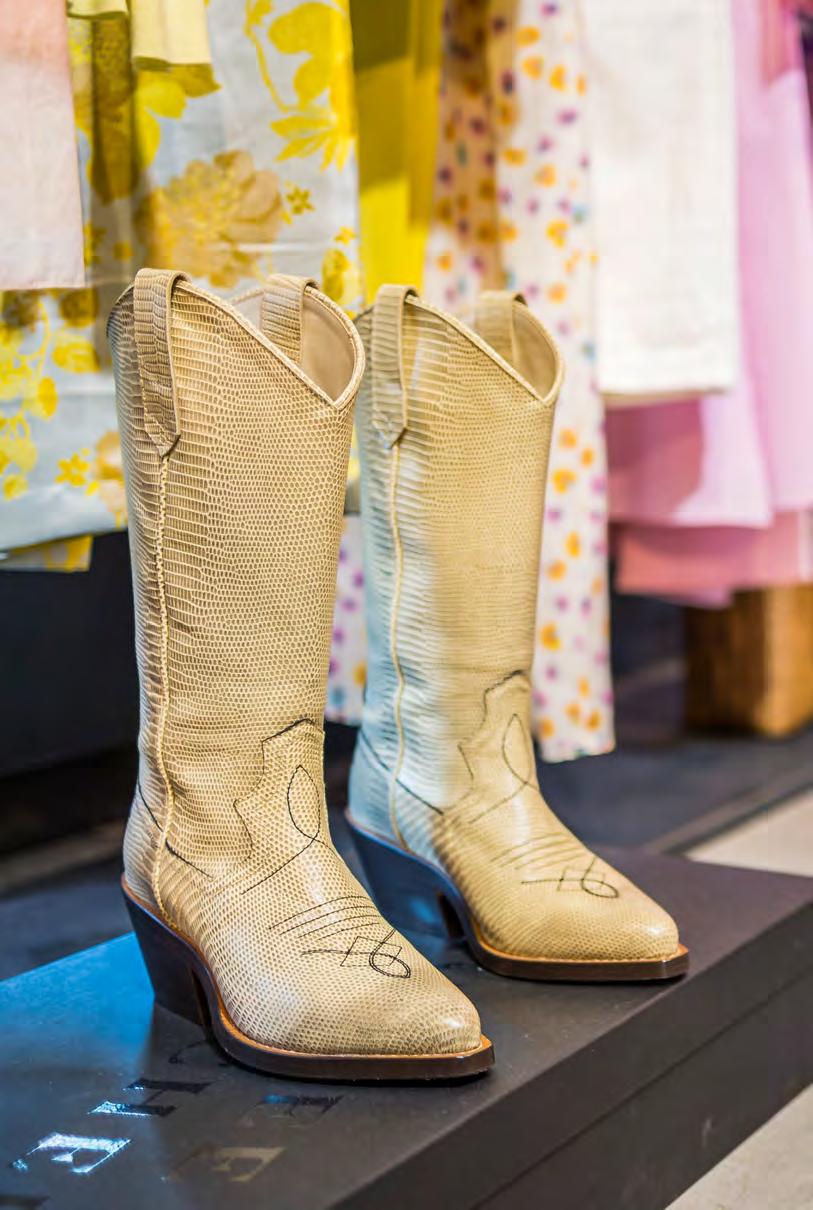
It is Annette Gasser’s stated aim to make the world a little more colourful. And a lot more stylish. Some of the labels she has on offer can’t be found anywhere else in Basel. She has a passion for combining a variety of brands and styles. She loves it when she can inspire her customers to try out something new and end up feeling wonderful in their own very personal and individual look. In order to offer this service, Annette is constantly searching for new brands. She often finds them while travelling – for example, the incredibly flattering dresses by the designer Hanout, which she came across in Marrakech. Or Odeeh, the label of a duo of German designers with brightly coloured, daring designs. Many of the brands at Dress up are from France and Italy – two countries whose fashion Annette Gasser holds very dear.
“I told myself: it’s now or never, otherwise it will be too late.”
Where did her love of fashion come from? “It was always there”, says Annette. Even when she had a job at a bank after completing her business diploma, she blew almost all her salary on clothes during her lunch breaks. “Back then, of course, it was usually at H&M – but already in pretty wild combinations ...” She quickly realised that the bank was not the place for her. When she got to know the owner of a chain of shops from the Romandie, whose Basel branch was doing badly, she offered to turn it around. And he gave her that chance! On a trial basis, for six months. “I was 20 years old and didn’t have the foggiest idea about business”, Annette realises this now. “But I was also young and full of hope and enthusiasm.”
At the end of the six months the branch had recovered and she was given a permanent contract.
It was only much later, about ten years ago now, that she plucked up the courage to start her own business. “I told myself: it’s now or never, otherwise it will be too late.” Annette Gasser knows about 80 % of her clients personally these days. And sometimes drinks a coffee or a glass of champagne with them. Because she selects her brands and does the purchasing and is still there in person at the store, she now knows very precisely which pieces, in which sizes will go down well with which customers. “Sometimes I’ll send my clients a text message if I have something in the shop that I know would suit them perfectly...”. Fashion is as much Annette Gasser’s passion as ever. She still spends practically every weekend between December and March travelling to Milan or Paris to buy the new collections. “In spirit, I’m at my store 24-7”, she tells us. And she is still amazed and proud about the marvellously crazy things her clients buy themselves, despite the fact that the clientele in Basel tends to be rather restrained. “The only problem is; I don’t see much of those crazy choices out in town, it’s such a pity! What appears out on the street is still grey, blue and black”, Annette grins. Which means she still has plenty of work to do!

Ten questions for Annette Gasser

What was the first designer piece you ever had?
A Chloé handbag. Mind you, I don’t have it any more, because I am quite radical about passing things on.
A wardrobe or a dressing room?
Three narrow wardrobes. However, I do try to crowd out my husband – unfortunately he’s having none of it. Because I don’t have much space and because I can only wear things for one season, I give my clothes away on a regular basis. In the store, I really have to be wearing what I currently have in stock. My clients like to be able to buy what they see me wearing.
Which colours are a no-go?
Well, until recently I thought yellow and lilac were completely awful. But now I have succumbed to them completely …
Can all these colours get to be too much?
Yes. Sometimes all I can bear in the midst of the rainbow in my store, is a look in just one colour. Then I often choose white or cream – I find black looks worse and worse on me. Maybe my age?
What would you be happy to not see any more, in terms of fashion?
Leggings. In fact, I find everything which cuts in and is too tight tricky. Luckily, we women are emancipated and no longer have to put everything on display.
What should every woman have in her wardrobe?
A pair of jeans, a white t-shirt, a decent pair of shoes and a good bag and you are perfectly styled these days. I would also recommend a well-fitting blazer, a white blouse and of course a must nowadays: sneakers. One or two sophisticated pieces are enough, by the way.
Can fashion and sustainability go hand in hand?

Yes, if you try to avoid things produced in Asia, and very consciously only buy individual pieces that go well with your existing wardrobe. And of course, you should avoid online shopping. Sustainability is also about shopping where you live.
Favourite material?
Leather, denim and bouclé. And now that I’m getting older sequins as well …
The worst time of your life – in fashion terms?
Well, I did have a New Wave phase … everything I wore had to be black, I had pointy boots, smeared my hair with sugar water and my eyes with dark make-up. Terrible!
If not fashion – then what?
When I was a teenager, my dream was to become a midwife. But if I had to choose now, it would be more in the direction of interior design or gardening. I’m afraid my garden doesn’t really look too good at the moment, but I used to spend days digging up the flowerbeds and planting things – I find gardening very relaxing.

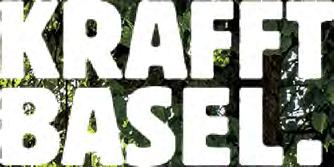
Ilya Kabakov, Fischli/Weiss, Invader oder Eddie Hara – in Basel stehen, liegen und hängen Werke bekannter und weniger bekannter Kunstschaffender an allen Ecken. Viele sind etwas verborgen oder nicht auf den ersten Blick erkennbar. Wir zeigen dir, wie dein Stadtspaziergang zum Kunstspaziergang wird.
Schwarzwaldbrücke
Das Who is who der hiesigen Streetart-Szene kannst du auf einer Länge von 350 Metern über dem Rhein kennenlernen: Rund 30 Kunstschaffende haben die ehemals triste Velo- und Fussgängerpassage mit Wandgemälden zum Thema Wasser verschönert. Hier findest du unter anderem Kunst von Eddie Hara, Bustart, Fafa, Pollo 7 und David Buckingham.

You can familiarise yourself with an entire who-is-who? of Basel’s local street art scene along this 350-metre stretch over the Rhine: Around 30 artists decorated the previously rather drab bike and pedestrian passageway with murals; the theme being water. You will find work here by artists such as Eddie Hara, Bustard, Fafa, Pollo 7 and David Buckingham.
Bücken unnötig – dieser Handschuh ist Kunst. Beim Museum für Gegenwartskunst liegt er seit 1998 unter einer Reihe von Bäumen, trägt den Namen «Denkmal für einen verlorenen Handschuh» und ist vom in New York lebenden russischen Maler und Konzeptkünstler Ilya Kabakov. Die neun Gedenktafeln rund um das rote Fundstück regen an, sich Zeit zu nehmen für Gedanken.

No need to bend down – this particular glove is art. It has been lying here since 1998 below a row of trees near the Museum of Contemporary Art, it is titled “Monument to a lost glove” and was painted by the Ukrainian-American painter and conceptual artist Ilya Kabakov, who lives on Long Island. The nine plaques surrounding the lost red glove are there to encourage the onlooker to take time to ponder.
Ganze Stadt
An Alexander Tschocke kommst du in Basel kaum vorbei. Seine Plastiken, Denkmäler, Reliefs und Brunnen findest du vor dem Kunstmuseum und der Universität, beim Wettsteinplatz, beim Sommercasino, in der Uni-Bibliothek oder auf dem Friedhof Hörnli, wo er selbst auch begraben liegt. Der Bildhauer (1894–1981) hinterliess seine Spuren jedoch nicht nur in seiner Heimatstadt, sondern auch im erweiterten In- und Ausland.
You can hardly get past Alexander Tschocke in Basel. His sculptures, memorials, reliefs and fountains can be found in front of the Kunstmuseum and the university, at Wettsteinplatz, at the Sommercasino, in the university library and at the Hörnli cemetery, where he is buried himself. The sculptor (1894-1981) left his mark not only in his home town, but also in the rest of Switzerland and abroad.
 St. Alban Tal
2 . FUNDSTÜCK
1. WASSER AUF DER BRÜCKE
St. Alban Tal
2 . FUNDSTÜCK
1. WASSER AUF DER BRÜCKE
Baloise Park beim Bahnhof SBB
3,5 Meter hoch ist die Bronzeplastik «Drittes Tier» des deutschen Bildhauers Thomas Schütte. Das sympathische Wesen ist eine Mischung aus Drache, Robbe und Kuh und schnaubt weissen Dampf – beziehungsweise kaltes Wasser, das zerstäubt wird.
The bronze statue “Third Animal” by the German sculptor Thomas Schütte is 3.5 metres high. This amiable creature is a hybrid of dragon, seal and cow and snorts out white steam – or rather, cold water that is vaporised.
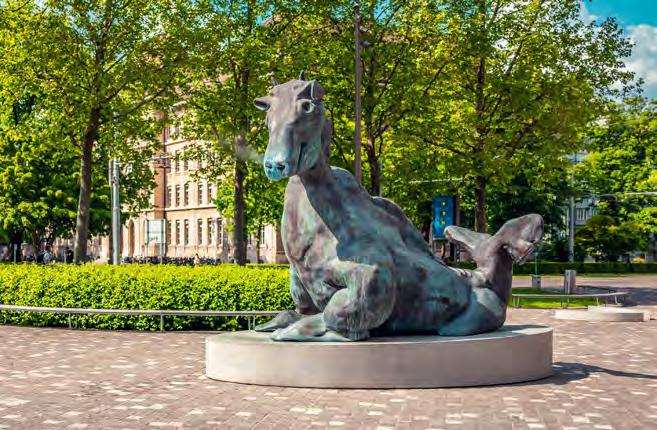
Am Dreispitz ist die Kunst zu Hause. Hier gibt es unzählige Skulpturen, Interventionen und Graffitis zu entdecken. An den Wänden zum Beispiel vom deutschen Graffitikünstler Hendrik Beikirch, vom Niederländer Jeroen Erosie oder vom Spanier Spy. Die ineinander verflochtenen Aluminiumpilze von Monica Studer und Christoph van den Berg sind in kurzer Zeit zum Wahrzeichen geworden.
Art is very much at home in the Dreispitz area. There are countless sculptures, art interventions and graffiti to be discovered here. On the walls, for example, by the German graffiti artist, Hendrik Beikirch, the Dutch artist, Jeroen Erosie and the Spaniard, Spy. The sculpture “Lost in Control”, draped in pink, by Nici Jost is also suspended from the ceiling. And the intertwining aluminium mushrooms by Monica Studer and Christoph van den Berg quickly became a landmark here.
Grenzacherstrasse, Roche-Turm 1
«Rock on Top of Another Rock» heisst das monumentale Kunstwerk von Peter Fischli und David Weiss vor dem Roche-Turm 1. Seit 2015 liegen die aufeinandergestapelten Granit-Blöcke aus dem Kanton Uri direkt vor dem Haupteingang. Und obwohl sie insgesamt 70 Tonnen wiegen, wirken sie als Skulptur fast unwirklich leicht. Aus Sicherheitsgründen sind die Steine übrigens miteinander verbunden und im Boden verankert.
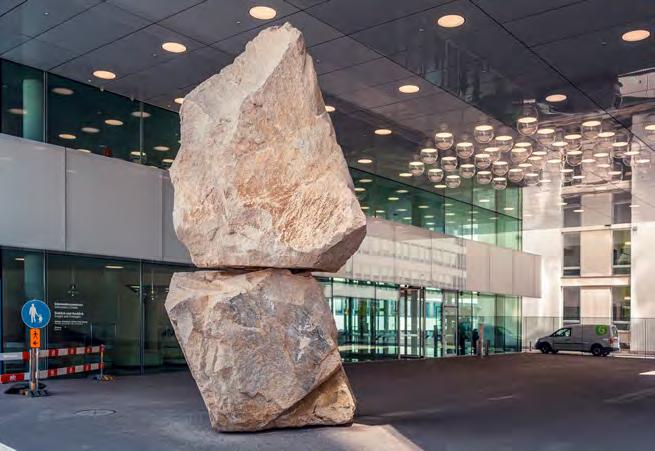
“Rock on Top of Another Rock” is the name of the monumental artwork by Peter Fischli and David Weiss in front of Roche Tower 1. The stacked blocks of granite from the Canton Uri have stood in front of the main entrance since 2015. And despite the fact that they weigh almost 70 tonnes, as a sculpture they appear almost surreally light. As a security measure, by the way, they are attached to each other and anchored in the ground.
Seit 1996 wird die Rückwand der Kunsthalle als temporärer Ausstellungsort genutzt, um jüngeren lokalen wie auch international bekannten Kunstschaffenden eine Bühne zu bieten. Rémy Zaugg hat auf den 150 Quadratmetern schon seine Spuren hinterlassen, Pedro Wirz, Esther Hiepler, Nevin Aladag, Yoan Mudry oder Judith Kakon. Jeweils im September kommt was Neues an die Wand.
The rear wall of the Kunsthalle has served as a temporary exhibition space since 1996, as a stage for young locals alongside internationally renowned artists. Rémy Zaugg left his mark on these 150 square metres, as did Pedro Wirz, Esther Hiepler, Nevin Aladag, Yoan Mudry and Judith Kakon. Each September, something new appears on the wall.
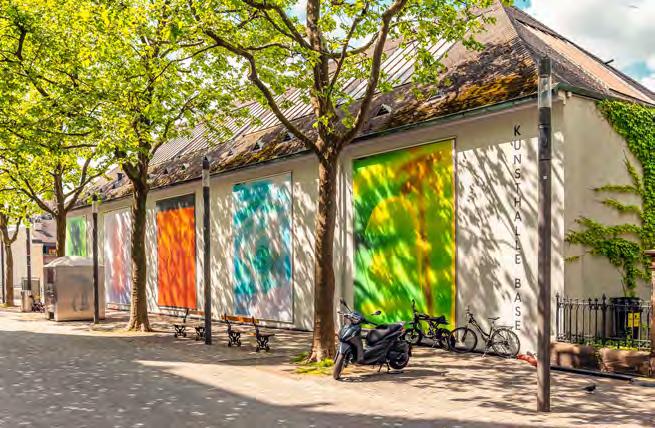

Auf dem Areal des Fleischwarenherstellers Bell ist 2020 das grösste Street-Art-Wandgemälde der Schweiz entstanden – 1700 Quadratmeter misst die Fläche, die verschönert wurde. Drei grosse Murals stammen von Mr. Cenz (UK), Bane & Chromeo (CH) und Bust (CH), 30 weitere Kunstschaffende bemalten weitere Wände auf dem Areal.
In 2020, the largest street-art mural in Switzerland was painted in the precinct of the Bell meat products manufacturing plant – it covers an area of 1,700 square metres. The three huge murals are the work of Mr. Cenz (UK), Bane & Chromeo (CH) and Bust (CH); 30 more artists have decorated other walls on the site.

Die trichterförmige Beton-Öffnung des Kreisels ragt 1,2 Meter über die Strasse und hat einen Durchmesser von knapp 15 Metern. Das Werk «Licht-Einfall» des Basler Künstlers Michele Cordasco macht nicht nur optisch etwas her, sondern gleichzeitig den unter dem Kreisel hindurchführenden Fussgängerweg hell und freundlich.
The funnel-shaped concrete aperture in the middle of the roundabout protrudes 1.2 metres above road level and has a diameter of almost 15 metres. The work “Licht-Einfall” by the Basel artist Michele Cordasco isn’t just an impressive sight, it also makes the pedestrian walkway which traverses beneath the roundabout bright and welcoming.

Der in Basel geborene Künstler Erik Steinbrecher verwirrt mit seinen beiden weissen Holzlattenzäunen das Auge. Die Kunstwerke «Landler» und «Polka» umkreisen Bäume und Gras. Die Tore sind verschlossen. Die Natur ist in Sicherheit, aber die normalerweise im Innern angebrachten Verstrebungen sind bei diesen Zäunen aussen. Also bin doch ich als Betrachter umzäunt? Die Wahrnehmung – sie ist verdreht.
The Basel-born artist Erik Steinbrecher confounds the eye with his pair of white wooden fences. The two works, “Ländler” and “Polka”, encircle trees and grass. The gates are locked. Nature is safe, but the strutting usually on the inside of a fence is on the outside here. Does that mean it is we, the viewers, who are fenced in? Our perception is confused.

Clarastrasse
Auf dem Weg zur Messe begegnest du dem Markenzeichen des französischen Street-Art-Künstlers Invader; einem seiner Mosaikbilder, die er auf der ganzen Welt hinterlässt. Auch der amerikanische Künstler Stephen Powers und der Deutsche Stefan Marx haben sich an verschiedenen Hauswänden verewigt. Hier lohnt sich ein Spaziergang mit erhobenem Haupt.
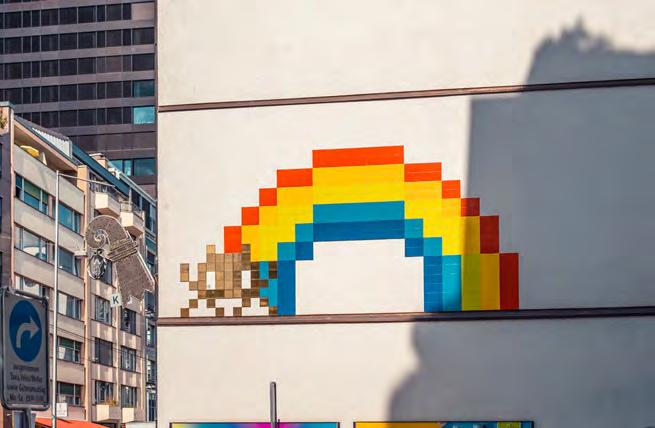
On the way to the Congress Centre, you will come across the signature feature of the French street-artist, Invader; one of the mosaic pictures that he leaves all over the world. The American artist, Stephen Powers and the German Stefan Marx have also immortalised themselves on the walls of various buildings in the area. It’s worth looking upwards when you are wandering around here.
Lust auf eine geführte Urban Art- und Graffiti-Tour? Zahlreiche nationale und internationale Kunstschaffende haben die Stadt mit unterschiedlichen Gestaltungstechniken geprägt.
Artstübli – Kunst & Kultur organisiert authentische Touren zu den spannendsten urbanen Entdeckungen und Spots, zu Fuss oder mit dem E-Bike/Fahrrad.
artstuebli.ch/tours
DISCOVERING
URBAN ART
Feel like taking a guided tour of Basel’s urban art and graffiti? A multitude of national and international artists have left their mark on the city, in a variety of techniques.
Artstübli – Art & Culture organises excellent tours to the most exciting urban finds and spots, either on foot or by e-bike/bike.
artstuebli.ch/tours
ZWISCHEN DIGITALER UND REALER WELT
Mit einer kostenlosen App kannst du dich auf die ARTour durch Basel machen und so Kunst auf neue, innovative Art und Weise erleben. Die Ausstellung beinhaltet zehn Augmented Reality-Kunstwerke zum Thema Celebrate Life, die im Stadtzentrum entdeckt werden können.
artour.basel.com
You can set off on the ARTour of Basel with a free-of-charge app and experience art in a completely new and innovative way. The presentation includes ten augmented reality artworks with the theme ‘Celebrate life’, all of which are to be found in the city centre.
artour.basel.com
ARCHITEKTONISCHE EINBLICKE
Neben der Kunst hat in Basel auch die Architektur ein besonderes Augenmerk verdient. Verschiedene
Gebäude können an öffentlichen Führungen erkundet werden – zum Beispiel der Roche Bau 2 oder der Novartis Campus.
basel.com/stadtfuehrungen
ARCHITECTURAL INSIGHTS
Along with its art, Basel has plenty of architecture which deserves your special attention too. A variety of buildings can be explored on public guided tours – for example Roche Tower 2 and the Novartis Campus.
basel.com/en/city-tours
Dingdong, willkommen in der Welt der Panels, Sprechblasen und Soundwörter. Anette Gehrig, Leiterin des Cartoonmuseum Basel, führt uns in die neunte Kunst ein und erläutert uns die Hintergründe der Comic-Entwicklung. Schnell wird klar: Aus der Nummer kommen wir nicht raus, ohne uns tief ins Thema zu graben. Dafür erkennen wir staunend, wie spannend, berührend und höchst unterhaltsam sich Comics scheinbar schwerelos zwischen Literatur, Malerei und Film bewegen.
Text & Bilder: Janine Wagner

Lange Zeit galt er als trivial, minderwertig, als Literatur für ungebildete Schichten und Jugendliche, die zu faul sind zum Lesen. Heute gilt der Comic als neunte Kunst. Seine Geschichten sind gesellschaftskritisch, politisch, witzig und philosophisch. Das Zusammenspiel von Bild und Text ermöglicht zarte Zwischentöne, kluge Wendungen und ergreifende Vielschichtigkeit. Den fahlen Beigeschmack von Schund haben die Comics offiziell bereits anfangs der 80er-Jahre verloren. Damals veröffentlichte Art Spiegelman seine Graphic Novel «Maus» und gewann damit den Pulitzerpreis. Die Geschichte eines Auschwitzüberlebenden bewies: Das Genre Comic ist dem Jugendalter entwachsen. Es ist nun nicht mehr nur leichte Unterhaltung. Es ist Literatur, es ist Kunst. Allein: Verinnerlicht haben wir diese Tatsache noch nicht.
«Es gibt noch viel zu tun, um den Comic in der Gesellschaft zu verankern», ist sich Anette Gehrig, Leiterin des Cartoonmuseum Basel, bewusst. «Immerhin wird er von der Kulturstiftung Pro Helvetia heute als eigenständige Kunstform gefördert. Es gibt in mehreren Schweizer Städten Schulen, in denen das Handwerk gelehrt wird, zudem zwei ComicFestivals.» Dass es in Basel seit 44 Jahren ein Kompetenzzentrum der narrativen Zeichnung gibt, ist eine absolute Besonderheit, denn, so Anette Gehrig: «Obwohl der Comic als Kunstform bereits seit Ende des 19. Jahrhunderts existiert, wurde er wenig gesammelt. Daher gibt es auch international bis heute nicht viele Comic-Museen.»

In Basel liegen rund 10 000 Karikaturen und Cartoons im Museumsarchiv, welches der Christoph Merian Stiftung von einem Anfang der 90er-Jahre verstorbenen Mäzen zur Verfügung gestellt wurde. Auch die öffentliche Präsenzbibliothek mit grossen Klassikern, spannenden Entdeckungen und Sekundärliteratur im ersten Stock des Museums wurde zu einem grossen Teil gestiftet. Grund genug, das Cartoonmuseum zu entdecken. Auf eigene Faust, oder – noch besser – an einer der regelmässigen Führungen, an denen Anette Gehrig persönlich Kontexte erklärt, über die Entwicklung der grafischen Literatur berichtet, auf Details hinweist und die Gäste von ihrem immensen Wissen und Know-how profitieren lässt.
Drei Ausstellungen organisiert sie pro Jahr, achtet dabei auf stilistische Vielfalt und Aktualität. «Ich mag es, Themen zu präsentieren, die uns unter den Nägeln brennen», erzählt sie. Allerdings legt sie auch Wert auf die Entwicklung des Genres. «Bereits zu Beginn des 20. Jahrhunderts war der Comic nämlich auf einem sehr, sehr hohen Niveau. Das sieht man zum Beispiel an den Werken von Winsor McCay oder Will Eisner, dem Godfather der Graphic Novel, dem wir eben eine Ausstellung gewidmet haben.» Neben den Klassikern sind im Museum auch regelmässig Jungstars zu entdecken, die ihr Schaffen hier präsentieren dürfen. Anette Gehrig beobachtet und kennt die Szene genau. Wer sich in das Genre Comic einlesen will, tut gut daran, sie um Rat zu fragen. Politische Debatten, Historisches, Themen rund ums Frausein, Fantasie- oder Beziehungsgeschichten – sie kennt sie alle. Wer bei den lustigen Taschenbüchern vor 30 Jahren stehen geblieben ist, braucht zwar etwas Übung, sich in einen zeitgemässen Comic einzulesen, doch dann wird sich schnell eine neue Welt auftun, die man nie wieder verlassen möchte.

Sagen Sie mal, Frau Gehrig … Können Sie sich an Ihren ersten Comic erinnern?
Ich habe mir gerne diese humoristischen Zeichnungen von Tomi Ungerer angeschaut. Und irgendwann während des Studiums bin ich mit Robert Crumb eingestiegen. Natürlich lagen auch Tim & Struppi bei uns zu Hause rum, aber die haben mich nie so richtig gepackt.
Ihr liebstes Buch ohne Bilder?
(überlegt lange) Leïla Slimanis «Der Duft der Blumen bei Nacht». Ich lese jedoch eindeutig mehr Comics!
Welches Genre lieber nicht?
Fantasy. Finde ich zwar nicht schlecht, ist aber nicht meine Welt. Und Mangas. Zwar gibt es einige, die ich gerne mag, allerdings lese ich die mehr, um mich zu informieren.
Bei welchem Comic Tränen gelacht?
An «Hempels Sofa» von Ralf König erinnere ich mich immer wieder gerne. Auch bei «Die Katze des Rabbiners» von Joan Sfar muss ich oft lachen –lerne aber auch ganz viel über die jüdische Religion.
Catherine Meurisse schreibt sehr lustvolle Kurzgeschichten über Beziehungen und Begegnungen –herzzerreissend, wenn auch überaus bitter und realistisch.
Bei welchem Comic Tränen geweint?
Ganz sicher «Maus» von Art Spiegelman. Das schau ich auch immer wieder an, weil es so vielschichtig ist, dass man gewisse Dinge erst später entdeckt.
Gehört der Humor im Comic dazu?
Nicht unbedingt. Joe Sacco hat zum Beispiel viele Reportagen zum Nahost-Konflikt gemacht. Ein ernsthaftes, kritischen und brennendes Thema. Natürlich sind auch da Szenen, in denen Humor eine Rolle spielt, aber grundsätzlich sind es gesellschaftskritische Inhalte. Ein anderes Beispiel ist Anja Wicki, die mit «In Ordnung» eine zarte Geschichte über Depression veröffentlichte. Durch die Verbindung von Text und Bild kann der Comic ganz besonders viele Ebenen ansprechen. Er kann starre Muster aufbrechen, neue Bilder finden, Fantasie hineinbringen. Oder ein Thema aus einer ganz anderen Perspektive beleuchten.
Können Sie zeichnen?
Ich finde Zeichnen etwas sehr, sehr Schönes und tatsächlich mache ich mir oft kleine Zeichnungen anstelle von Notizen. Dennoch liegt mir das Analytische mehr.
CARTOONMUSEUM

Superman, Popeye, Garfield, Bugs Bunny: Comicfiguren finden Millionen von Lesern auf der ganzen Welt. Den Anfang machte «Yellow Kid», eine Geschichte von Zeichner Richard F. Outcault, die 1895 erstmals in der New Yorker Zeitung «Sunday World» erschien und rasende Verbreitung fand, auch weil ihn Jung und Alt, Amerikaner wie auch fremdsprachige Einwanderer gleichermassen verstanden. Der Ursprung des frechen Buben geht jedoch zurück ins Mittelalter, wo ebenfalls bereits mit sequenziellen Bildfolgen gearbeitet wurde.
Die ab 1902 erschienenen Comichefte richteten sich hauptsächlich an Kinder und Jugendliche, waren vor allem lustig und wurden daher auch «funnies» genannt. Mit Superman explodierten ab 1938 die Verkaufszahlen. Weitere Superhelden wie Batman, Captain America und Wonder Woman folgten. Nach dem Zweiten Weltkrieg erschienen zunehmend Comics, die Themen wie Sex, Gewalt und Verbrechen thematisierten, was eine Welle an öffentlichen Protesten gegen den moralischen Verfall zur Folge hatte. Der ab 1954 geltende «Comics Code» verbannte alles Unsittliche aus dem Comic. Mickey Mouse, Donald Duck und Co. freuten sich – ihre harmlosen Geschichten verkauften sich umso besser. Allerdings liessen die fortan unter der Hand publizierten Undergroud-Comics weiterhin kein Tabu aus. 1978 schaffte Will Eisner mit «A contract with God» die erste Graphic Novel, die vor allem Erwachsene ansprach. Internationale Aufmerksamkeit erhielt das Genre durch das Werk «Maus» von Art Spiegelman. Der Künstler verarbeitete darin die Geschichte seines Vaters, der das Konzentrationslager Auschwitz überlebte. Spiegelmans Arbeit wurde 1992 mit dem Pulitzerpreis honoriert.
In Europa startete der Durchbruch mit Tintin (Tim und Struppi), der erstmals 1946 erschien. Tintins Schöpfer Hergé stammte aus Belgien, dem Mutterland des europäischen Comics. Später feierten Spirou und Fantasio, Asterix und Obelix oder Lucky Luke grosse Erfolge. Während die französische Schweiz seit Mitte des 19. Jahrhunderts Bildergeschichten produzierte und mit Belgien und Frankreich in engem Austausch stand, bestanden die Deutschschweizer Comics lange Zeit fast ausschliesslich aus «lustigen» Bildergeschichten wie Papa Moll oder Globi. Erst in den 80er-Jahren entwickelte sich mit dem avantgardistischen Comic Magazin Strapazin eine entsprechende Szene. Heute ist das Schweizer Comicschaffen über die Sprachgrenzen hinweg inhaltlich wie auch stilistisch extrem vielfältig.
St. Alban-Vorstadt 28 – cartoonmuseum.chDing-dong! And welcome to the world of panels, speech balloons and sound words. Anette Gehrig, director of the Cartoon Museum Basel, takes us on an introductory tour of the ninth art and the background story of how comics developed. One thing becomes clear very quickly: We are not going to be let off the hook before we submerge ourselves in this topic. In exchange, we realise with amazement how enthralling, poignant and extremely entertaining these comics, which seem to drift so weightlessly between literature, the art of painting and film, really are.
For a long time, comics were considered trivial and trashy, a form of literature for the uneducated and young people too lazy to read properly. Nowadays, comics are the ‘ninth art’. The stories they tell are socially critical, political, witty and philosophical. The interplay of image and text allows for delicate nuances, canny twists and a thrilling complexity. Comics officially shed their wan taint of shoddiness at the beginning of the 1980s, when Art Spiegelman published his graphic novel “Maus” which was awarded the Pulitzer Prize. This story of an Auschwitz survivor proved the comic genre had outgrown its adolescent period. It was no longer just light entertainment. It was literature, it was art. The only problem: We have still not fully internalised this fact.

“There is still a long way to go before the art of comics is really embedded in our society”, this is quite clear to Anette Gehrig, director of the Basel Cartoon Museum. “At least these days it is being promoted by the Pro Helvetia Swiss Arts Council as an art form in its own right. There are now schools in several of Switzerland’s cities where it is taught as a craft, and we have two comic festivals.”, The fact that Basel has had a centre for excellence in narrative illustration for 44 years now is extremely unusual, because as Anette Gehrig explains: “Although comics have existed as an art form since the late 19th century, they were not really collected. Which is why there are still very few comic museums, even at an international level.”
The museum archive in Basel houses around 10,000 caricatures and cartoons; they were left to the Christoph Merian Foundation at the beginning of the 1990s by a patron. Most of the content of the public reference library on the upper floor of the museum, important classics, exciting discoveries and secondary literature, was also donated. Plenty of reasons to explore the cartoon museum. On your own, or – even better – on one of the regular guided tours, where Anette Gehrig herself clarifies contexts, chronicles the development of graphic literature, points out interesting details and allows the visitor to profit from her vast knowledge and know-how.
She organises three exhibitions a year, ensuring that they are stylistically diverse but topical. “I like to showcase topics that are really preying on everyone’s minds”, she explains. However, she also emphasises the importance of the evolution of the genre. “Comics had already reached a very, very high level at the beginning of the 20th century. You can see that, for instance, in the works of Winsor McCay and Will Eisner, the godfather of the graphic novel; whose works we just dedicated an exhibition to.” Along with the classics, the museum also regularly offers the opportunity to discover the up-and-coming young stars of the genre, who present their work here. Anette Gehrig observes the scene closely and is very well informed. Anyone who wants to read up on the genre of comics couldn’t do better than ask her advice. Political debates, historical tales, the issues involved in being a woman, fantasy literature and relationship stories –she knows them all. If the last comics you read were the Donald Duck pocket books thirty years ago, you’ll need to do a bit of catching up before delving in to modern comic books, but then a whole new world will open up before your eyes, a world you’ll never want to leave again.
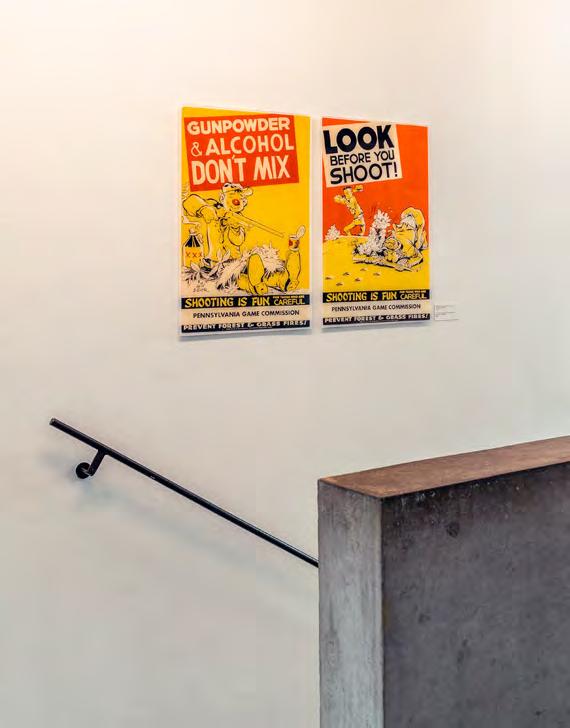
Please tell us, Ms Gehrig …
Can you remember your first comic?
I enjoyed looking at the humoristic drawings by Tomi Ungerer. And at some stage, while I was studying, I got in to Robert Crumb. And of course, we had the Tintin comics lying around at home, although they never really enthralled me.
And your favourite non-illustrated book?
(She ponders for a while)
Leïla Slimani, “The scent of flowers at night”. But I definitely read far more comics!

Which genre are you not so keen on?
Fantasy. It’s not that I think it’s bad, it’s just not really my thing. And Mangas. There are a few of them that I like, but on the whole, I read them to keep abreast of what’s happening.
Which comic made you laugh so much you cried?
I always enjoy thinking about “Hempel’s Sofa” by Ralf König. “The Rabbi’s cat” by Joan Sfar makes me laugh a lot as well – and I learned a lot about Judaism by reading it. Catherine Meurisse writes very exciting short stories about relationships and encounters – heart-rending, even though extremely sardonic and realistic.
Which comic moves you to tears?
Definitely “Maus” by Art Spiegelman. I look through that again and again, because it is so multi-faceted that there are certain things that you only notice later.
Is humour an essential feature of comics?

Not necessarily. For example, Joe Sacco has produced a lot of reports in this format on the Middle East conflict. This is a grave, crucial and urgent topic. Of course, they also contain scenes in which humour plays a role, but in general the content is socio-critical. Another example would be Anja Wicki with “In Ordnung”, a subtle story about depression. The combination of text and image in comics allows them to address so many different levels. The combination can break up inflexible patterns, uncover new images, allow imagination to seep in. Or illuminate a subject from an entirely different perspective.
Are you good at drawing?
I find drawing very, very lovely and I do often draw little sketches for myself, rather than take notes. But actually, I am more analytically inclined.


Superman, Popeye, Garfield, Bugs Bunny: The characters in comics have millions of followers all over the world. It all started with “”Yellow Kid”, a story created by the illustrator Richard F. Outcault; first published in 1895 in the New York journal “Sunday World”, it caught on with incredible speed, because everyone understood it, the young and the old, native English-speakers and recent immigrants with other mother-tongues. But in fact, the roots of this cheeky boy reach back to the Middle Ages, a period in which picture sequences were also used.
The comics which started appearing in 1902, aimed mainly at children and youngsters, were first and foremost humorous and were therefore also nicknamed the “funnies”. When Superman appeared in 1938, sales figures exploded. Other superheroes followed: Batman, Captain America and Wonder Woman. After the Second World War had ended, more and more comics appeared dealing with topics such as sex, violence and crime; this led to a wave of public protests against the decay in moral values. The “Comics Code”, which came into force in 1954, prohibited the inclusion of anything immoral in comics. Mickey Mouse, Donald Duck and co. were delighted – their innocuous stories sold all the better. However, the underground comics, now distributed on the quiet, observed no taboos. In 1978, Will Eisner created “A contract with God”, the first graphic novel, which appealed primarily to adults. The genre achieved international recognition with the publication of “Maus” by Art Spiegelman. In this work the artist deals with the story of his father who survived the concentration camp at Auschwitz. Spiegelman’s work was honoured with the award of the Pulitzer Prize in 1992.
In Europe, it was Tintin and Snowy, first published in 1946, that created the breakthrough. Tintin’s creator, Hergé, was from Belgium, the motherland of European comics. Later, Spirou & Fantasio, Asterix & Obelix, and Lucky Luke were great successes. While illustrated stories had been created in the French-speaking area of Switzerland since the middle of the 19th century, an area which enjoyed a close cultural exchange with Belgium and France, for a long time the Swiss-German comics consisted almost exclusively of “funny” strip cartoons such as Papa Moll and Globi. It was only in the 1980’s, with the avant-garde comic magazine Strapazin, that a similar scene developed. Nowadays, Swiss comic artistry is extremely diverse, both in content and style, regardless of linguistic boundaries.

Vollgepackt mit Inspiration für deine



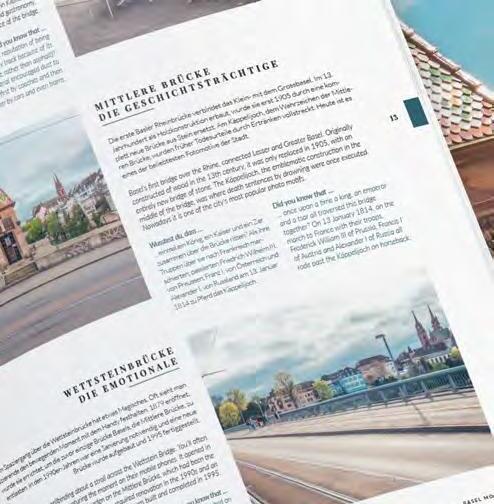















Du hast etwas Zeit in Basel und willst nicht ausschliesslich auf ausgetretenen Pfaden wandeln?
Wir haben dir ein paar besondere Orte zusammengestellt, die zu kennen dich quasi zum «Local Hero» machen.
Imbergässlein
Dieses winzige Museum versteckt sich in einem verwinkelten Gässlein am Nadelberg. Weniger als einen halben Quadratmeter ist das Museum gross und an der Tür eines über 600 Jahre alten Wohnhauses montiert. Ursprünglich diente es als Sichtschutz gegen neugierige Touristen, ist heute aber auch unter Baslerinnen und Baslern beliebt, da hier laufend skurrile Sammlungen mit winzigen Objekten präsentiert werden.
This tiny (in a trouser pocket) museum is tucked away in a crooked alleyway off the Nadelberg. It is less than half a square metre in size and is mounted on the door of a 600-year-old house. It was originally mounted as a screen against the prying eyes of tourists, but it is now popular among Basel’s permanent residents, with its display of a constantly changing absurd collection of tiny objects.
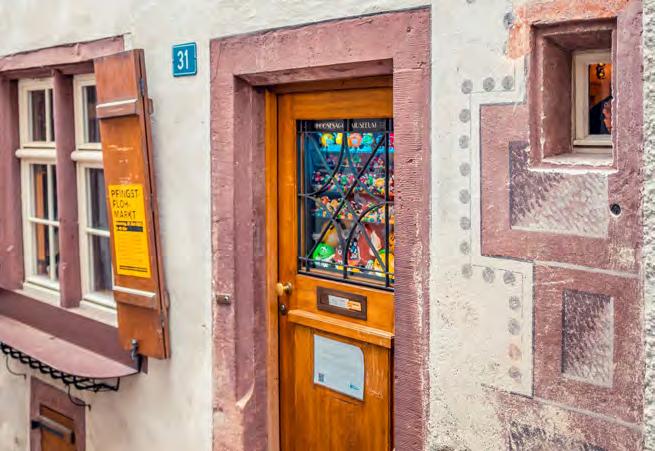
Zwischen Münchensteinerstrasse (Grosspeter) und St. Alban-Ring Between the Münchensteinerstrasse (Grosspeter) and the St. Alban-Ring
Eigentlich ist das Hexenweglein ein Veloweg, der einem den Bahngleisen entlang die Fahrt über stark befahrene Strassen erspart. Das Besondere an dem Weg ist der Blick auf die berühmt-berüchtigte «Basel Line» –Europas schönster Graffiti-Sammlung. Seit den 1980er-Jahren verewigen sich hier Graffiti-Künstler aus ganz Europa.
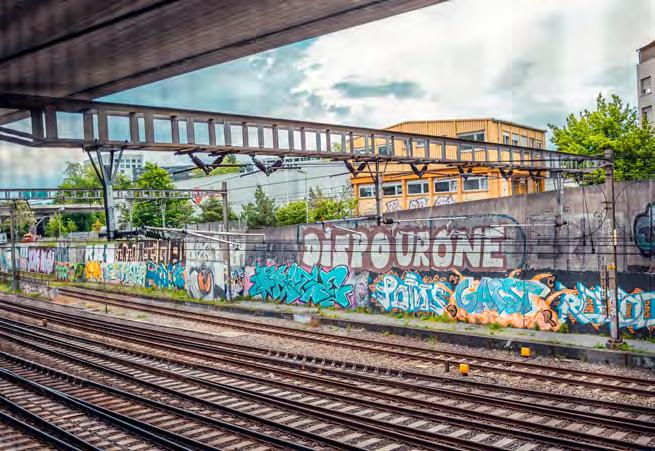
The ‘witch’s way’ is actually a bicycle path along the railway tracks which allows you to avoid crossing busy roads. What is special about this path is the view it gives you of the notorious “Basel Line” – Europe’s most fantastic collection of graffiti. Graffiti artists from all over Europe have been immortalising themselves here since the 1980s.
Petersplatz – jeweils samstags ab 7.30 Uhr bis ca. 16 Uhr Petersplatz – Saturdays 7.30 a.m. till around 4 p.m.
Etwas andere Basel-Souvenirs und besondere Schätze findest du jeden Samstag auf dem «Flohmi» am Petersplatz. Kein Basler und keine Baslerin, die hier nicht schon ihren Hausrat, ausrangierte Kleider oder Grossmutters Porzellan verhökert hätten. Entsprechend vertraut und entspannt ist auch die Stimmung – man kennt sich. Und wenn nicht, quatscht man trotzdem zusammen.
You’ll find a slightly different sort of souvenir of Basel and some special treasures, almost every Saturday, at the flea market at the Petersplatz. There’s probably not a single person in Basel who has not, at some point, flogged off household items, discarded clothes or their grandmother’s porcelain here. The atmosphere is familiar and relaxed – people know each other. And even if they don’t, they’ll have a chat anyway.

Beim Kunstmuseum den Mühlenberg runter zum St. Alban-Rheinweg –vor der alten Stadtmauer rechts.
Past the new wing of the Kunstmuseum, walk down the Mühlenberg to the St. Alban-Rheinweg – turn right in front of the old city wall.


Hier unten steht die Zeit still und Stadtgeräusche sind fern. Kleine Kanäle durchziehen das liebevoll restaurierte Quartier, in welchem du dich fühlst wie in einem kleinen Dorf. Lausche den Vögeln, zelebrier die Romantik, entdecke Architektur und Kunst oder geniess einen schönen Apéro im Café der mittelalterlichen Papiermühle.
Time has stood still down here in this vale and the sounds of the city are distant. Little water channels criss-cross the lovingly restored quarter, where you feel as though you are in a village. Listen to the birds, enjoy the romantic atmosphere, discover the architecture and art all around you or enjoy a lovely aperitif in the café of the mediaeval Paper Museum.
Tinguely-Museum bis Johanniter- oder Dreirosenbrücke – bitte nicht alleine in den Rhein steigen, es gibt im Sommer genügend geübte Schwimmerinnen, denen du dich anschliessen kannst! From the Tinguely-Museum down to the Johanniterbrücke or the Dreirosenbrücke –but please do not go swimming in the Rhine alone, there are plenty of experienced swimmers in the river in the summer whose groups you can join!
Im Sommer ist Schwimmen im Rhein das allerbaslerischste, was du tun kannst. Pack deine Kleider in einen Schwimmsack (die bunten Wickelfische gibts hier an jeder Ecke) und lass dich vom Tinguely Museum heruntertreiben. Neben der Erfrischung hast du vom Wasser aus einen ganz eigenen Blick auf die Stadt und die Häuserkulisse am Rhein. Auf Höhe Johanniter- oder Dreirosenbrücke steigst du aus und setzt dich an eine der Buvetten zum Sun-Downer.

In summer, the most Basel-y thing you can do is to go swimming in the Rhine. Pack your clothes in a dry bag (you can buy one of the colourful roll-up Wickelfische on every corner here) and then drift down with the current from the Tinguely Museum. Quite apart from how refreshing it is, you’ll have a very different view of the city and the houses lining the Rhine when you are in the water. If you get out of the river at the Johanniterbrücke or the Dreirosenbrücke you can drink a sundowner at one of the buvettes there.
MAURERHALLE
Vogelsangstrasse 15
Der Hot-Spot für Selfies und Insta-Storys: Die Maurerhalle der Allgemeinen Gewerbeschule von 1961. Die Schulanlage wurden vom Basler Architekten Hermann Baur entworfen – Beton war sein Konzept. Die Maurerhalle ist eine begehbare Betonskulptur, die mit scheinbarer Leichtigkeit das ebenso gefaltete Dach trägt. Ebenfalls spektakulär: das Zusammenspiel von Kunst und Architektur auf dem Areal. Fotokamera nicht vergessen!
The hot-spot for selfies und Insta-stories: the Masonry Hall of the General School for Trade constructed in 1961. This college complex was designed by the Basel architect Hermann Baur – whose speciality was concrete. The Masonry Hall is a concrete sculpture you can enter, which supports its pleated roof with apparent ease. Also spectacular: the interplay of art and architecture on site. Don’t forget your camera!
BOTANISCHER GARTEN
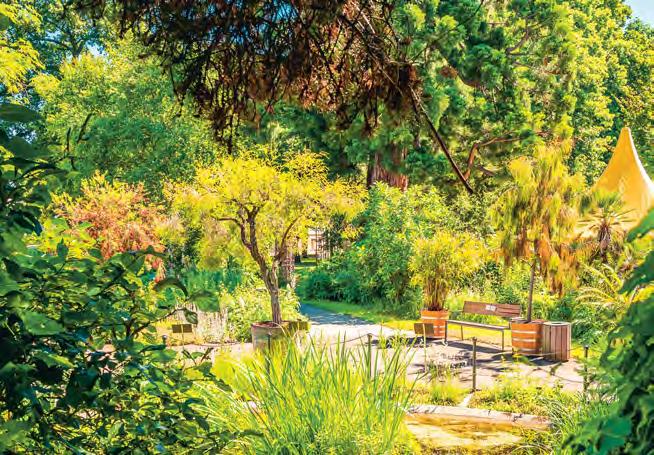
TROPENHAUS & BERGNEBELWALDHAUS
Spalengraben 8 – täglich geöffnet ab 8 Uhr. botgarten-unibas.ch Spalengraben 8 – opens daily at 8 a.m. botgarten-unibas.ch
Oft vergessenes, stilles Einod inmitten der Stadt ist der Botanische Garten der Universität Basel. Hier kannst du im historischen Viktoriahaus imposante Amazonas-Seerosen mit Blättern mit bis zu zwei Metern Durchmesser bewundern und das kürzlich eröffnete Tropenhaus besuchen. Bei Hitze ist auch das Bergnebelwaldhaus ein Segen – hier findest du Erfrischung und viele seltene tropische Bergpflanzen.
An oft overlooked peaceful oasis in the middle of town is to be found at the Botanical Gardens of Basel University. In the historic Victoria House, you can admire imposing Amazon water lilies with leaves of up to two metres in diameter and you can now visit the new Tropical Conservatory, reopened on 27 May. When it’s hot outside, the Mountain Cloud-Forest House is a blessing with its refreshingly cool air and a collection of rare mountainous plants from the tropics.
ST. ALBAN TALReservoirstrasse 200
Das Bruderholz ist – abgesehen vom Restaurant Stucki – vielleicht nicht die erste Adresse auf einem Basel-Trip. Schade eigentlich, denn vom 1926 eröffneten Bruderholzturm aus kann man die ganze Region überblicken, sieht hinter den Roche-Türmen den Schwarzwald und über die Hügel bis tief ins Baselbiet. Zudem ist ein Spaziergang auf dem Bruderholz sehr inspirierend; hier stehen nämlich überaus eindrückliche Villen …

The Bruderholz – with the notable exception of the Stucki Restaurant – is not really the first place on anyone’s list for a trip to Basel. Which is a pity really, because from the Bruderholz tower, opened in 1926, you have a magnificent view of the whole region, the Black Forest behind the Roche towers and beyond the hills deep into Basel’s countryside. And a walk around the Bruderholz is rather inspiring; there are some pretty impressive villas here …
Der Spalenberg lässt das Basler Herz höherschlagen – nicht nur wegen dem etwas anstrengenden Aufstieg, den man vom Marktplatz aus in Kauf nimmt, sondern vor allem wegen den zauberhaften Altstadthäusern, den Boutiquen und Galerien. Unbedingt auch den Gemsberg, den Heuberg und den Nadelberg entlangspazieren und den Charme der lauschigen Gassen aufsaugen. Hier ist die jahrhundertealte Stadtgeschichte zum Greifen nah.

The Spalenberg makes the hearts of Basel’s inhabitants pound – and not just because it’s a bit of a steep climb, which you have to take in your stride if you approach from the Marktplatz; no, it is mainly because of the enchanting old town houses, the boutiques and the galleries. Make sure you take in the Gemsberg, the Heuberg and the Nadelberg, as well, on your stroll and soak up the charm of these secluded lanes. Hundreds of years of the city’s history are here to be grasped.
Uferstrasse/Klybeckquai – holzpark-klybeck.ch gannet.lv / deck57.ch / hafenkran.ch / sandoase.ch
Einmal auf der Kleinbasler Rheinseite in Richtung Nordsee spaziert, schon kommst du an den wildesten Orten der Stadt vorbei: Auf dem Hafenkran kannst du 15 Meter über dem Rhein apérölen, auf dem Feuerschiff Gannet gibts Kultur, Gastronomie und Fernweh und so gehts weiter bis zum Dreiländereck: ein bunter Kreativraum mit Ateliers, Bars, Werkstätten, Kulturräumen und Gastronomie. Unique!
If you walk along the Kleinbasel bank of the Rhine in the direction of the North Sea, you will reach some of the wildest places in town: you can enjoy an evening drink, 15 metres above the Rhine, on the port crane; and on the Gannet lightship culture, gastronomy and wanderlust. Then onwards, to the Dreiländereck (corner of three countries): a colourful creative area with studios, bars, workshops, cultural spaces and restaurants. Unique!

Erst seit Kurzem ist der Novartis Campus – globaler Hauptsitz von Novartis –öffentlich zugänglich und somit bis heute ein wahrer Geheimtipp: Da sind der imposante Novartis Pavillon, der sich mit den grossen Fragen des Gesundheitswesens beschäftigt oder das Gehry Auditorium, zudem gibt es diverse Restaurants, Cafés und eine schöne Parkanlage am Rhein.
The Novartis Campus – Novartis’ global headquarters – has only recently opened its gates to the general public and is therefore still a real insider’s tip: It houses the imposing Novartis pavilion, where major healthcare questions are addressed and the Gehry auditorium; there is also an assortment of restaurants and cafés, plus a lovely park next to the Rhine.

Textildesignerin Fabia Zindel von Matrix liebt Geschichten und Handwerkskunst. Beides bringt sie seit mehr als 25 Jahren in ihren bunten Foulards zum Ausdruck.
Das Geschäft könnte nicht schöner liegen. Direkt am Rhein, in der St. Johanns-Vorstadt, wo alteingesessene neben neuen Geschäften, Restaurants und Cafés den ganz eigenen Charme dieses Quartiers widerspiegeln. Hier trifft Tradition auf Moderne, vermählt sich Bodenhaftigkeit mit Weltoffenheit. Und: Der Rhein als Strasse zur Welt spiegelt sich sogar im Schaufenster des kleinen charmanten Ladens. Wenn das kein Zeichen ist. Willkommen bei Matrix, der Basler Marke für Textildesign, die vor allem für ihre bunten Foulards bekannt ist. Die spielen natürlich auch die Hauptrolle im Shop und fallen einem beim Betreten sofort ins Auge. Stilvoll präsentiert und in Szene gesetzt, werden auf den Plakaten sogar die Models zur Nebensache. Viele Salzstreuer stehen auf den Ablagen, Tischen, Fensterbänken. Was es damit zu tun hat, werden wir noch erfahren. Doch erstmal folgen wir den geometrischen Mustern wie eine Einladung – von Gläsern zu Foulards, von Foulards zu Tabletts, von Tablett zu Geschenkpapier. Wir sind begeistert von der Schlichtheit der Formen bei gleichzeitiger Komplexität der Produkte, die einiges zu erzählen haben.

Salz als umspannendes Thema
Da wären zuerst einmal die Geschichten rund um die Kollektionen, die von der Aktualität des Alltags, von Kunst, Wissenschaft und neuen Stilen inspiriert sind. Hinter jeder Kollektion verbirgt sich ein bestimmtes Thema, das auf den ersten Blick nicht immer ersichtlich ist, aber zu dem bekannten Aha-Effekt führt, sobald man die Hintergründe erfährt. «Ich brauche ein inhaltliches Thema, das mich zum grafischen Muster führt» so Textildesignerin Fabia Zindel, die Matrix im Jahr 1995 gegründet hat und für die Konzeption und Entwicklung der Designs, sowie deren Produktion zuständig ist. In ihrem Moodboard zum aktuellen Thema Salz geben zahlreiche Zeichnungen und Fotografien von Salzkristallen, Salzseen oder Salzhaufen einen Eindruck, nach welchen Vorlagen die geometrischen Muster entstanden sind. Verspielt und dezent wird auch im Shop überall auf das Thema hingewiesen. Und hier kommt die Armada an Salzstreuern ins Spiel, die mit ihrer Patina einen perfekten Gegenpol zu den glatten seidenen und farbgesättigten Matrix-Protagonisten sind. Die sind allerdings längst nicht mehr allein. Mittlerweile werden mit der Linie Matrix-Ménage auch Produkte für den Haushalt wie Serviertabletts, Papeterie, Geschenkpapiere, Kissen und Servietten hergestellt. Die beliebten Serviertabletts entstanden gar vor 20 Jahren – aus einem Überschuss heraus: «Wir hatten anfangs so viele Stoffreste, die ich nicht entsorgen wollte», erinnert sich Fabia, «da musste ich mir etwas einfallen lassen.» Kurzerhand schichtete sie den Stoff mit einem kunstharzbeschichteten Cellulosematerial und (ver)presste das Ganze zu Serviertabletts.
Auch heute entstehen die Tabletts nach diesem Prinzip, was zu einer ganz besonderen Ästhetik führt: Schaut man genau hin, erkennt man den Stoff unter der Versiegelung. Da ist er wieder, der Aha-Effekt. Die Stoffreste wiederzuverwerten war eine logische Konsequenz ihres Nachhaltigkeitsbestreben – von Anfang an ein fester Grundpfeiler in der Philosophie von Matrix.

Nachhaltigkeit in vorbildlicher Konsequenz Denn die Matrix-Produkte unterliegen einem strengen Umweltkonzept. Es werden ausschliesslich Stoffe aus Naturfasern (wie beispielsweise Seide, Wolle oder Leinen) verwendet, was gleichzeitig für ein unheimlich angenehmes Tragegefühl sorgt. Zudem wird mit wasserlöslichen Farben gedruckt. Konsequenterweise findet die gesamte Produktion in der Schweiz statt. Kleine Serien werden in der eigenen Textil-Siebdruckerei von Hand bedruckt, in einem kleinen Hinterhof im Bachlettenquartier, wo Fabia auch ihr Atelier hat. Bei unserem Besuch staunen wir über die unerwartete Ordnung, auf dem grossen Tisch in der Mitte stapeln sich einzig ein paar Notizbücher und Tabletts. Daneben deuten ein Piano, eine Strickmaschine und ein paar bepflanzte Samentöpfe auf ihre Hobbys hin. «Gärtnern ist tatsächlich zu einer grossen Leidenschaft geworden und ein guter Ausgleich zum Designhandwerk. Das Piano hilft mir, um abzuschalten. Dagegen ist die Strickmaschine überhaupt kein Hobby, sie steht da, damit ich den Umgang mit ihr nicht verlerne.» Über eine Treppe geht es runter in die Siebdruckerei, wo die Kleinstserien entstehen. Aktuell steht alles still, zeugen lediglich die vielen Farbtöpfe in einer Ecke darauf hin, dass hier zuweilen mächtig was los sein muss. «Die aktuelle Kollektion ist ja schon lanciert und im Verkauf» erklärt uns Fabia. Jedes Jahr entsteht eine neue Kollektion mit 6–8 verschiedenen Designs in verschiedenen Farben. Dafür hat Fabia ein eigenes Farbsystem entwickelt, aus etwa 1300 Farben kann sie feinste Nuancen mittels genauer Rezepturen mischen und für ihre Kollektionen auswählen. «Das ist wichtig, um die Farben genau reproduzieren zu können, denn Muster und Farben sind so definiert, dass sich alle Artikel einer Kollektion untereinander gut assortieren und kombinieren lassen. Natürlich gehen die Farben immer auch auf die aktuellen Modetrends ein.»

Das Handwerk muss ersichtlich sein

Und falls die Kapazität der hauseigenen Siebdruckerei nicht ausreicht, werden grosse Serien streng nach Matrix-Richtlinien in qualifizierten Schweizer Partnerbetrieben produziert. Die Konfektion der Foulards wird dann in aufwendiger Handarbeit von Appenzeller Handroulierinnen getätigt. «Das Handwerk hinter dem Produkt soll immer spürbar sein», wünscht sich die Designerin. «Auf Anfrage muss ersichtlich sein, wie es entstanden ist, wo es produziert wird, und welche Menschen dahinterstecken. Am liebsten würde ich persönlich auch alle Endverbraucherinnen und Endverbraucher kennen, aber das ist natürlich nicht möglich.» Doch merkt man, wie wichtig ihr die Nähe zwischen Handwerk, Produkt und Kundschaft ist. So wichtig, dass sie in der Vergangenheit bewusst darauf verzichtet hat, zu wachsen, obwohl die Möglichkeit dagewesen wäre, sich z. B. in Paris gross aufzustellen. So bleiben die Matrix-Produkte eine mit Basel eng verbundene Exklusivität mit diesem einen Matrix Shop – hier am Rhein. Natürlich war der Rhein auch schon Inspiration für eine vergangene Kollektion, ebenso wie die Schiffskräne, die ihn säumen. Wer die passenden Geschichten dazu hören will, sollte schleunigst in den Matrix Shop.
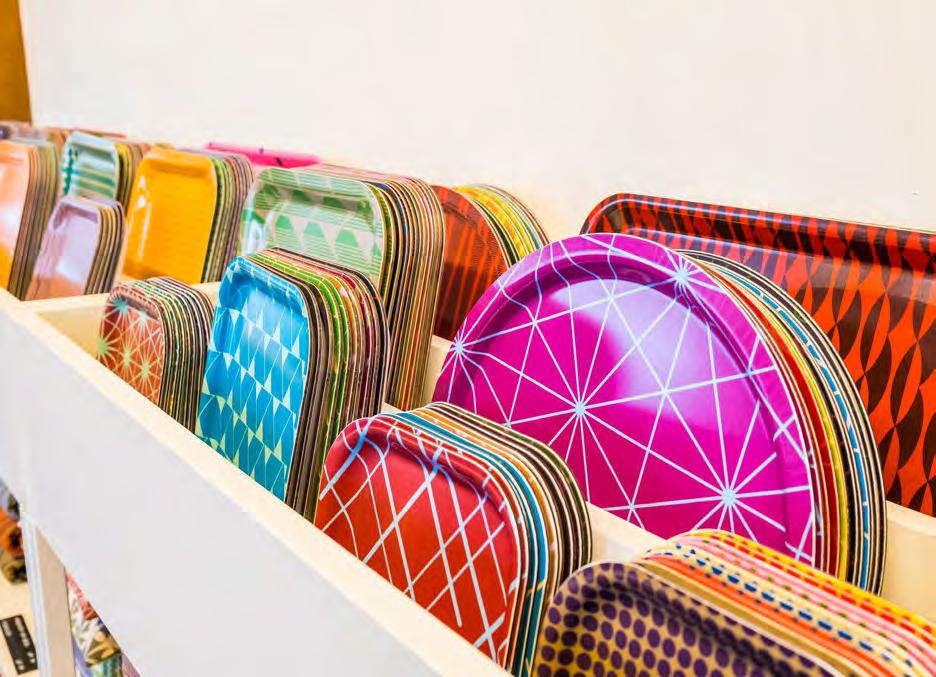 St. Johanns-Vorstadt 38 – matrixdesign.ch
St. Johanns-Vorstadt 38 – matrixdesign.ch
Fabia Zindel, the textile designer behind Matrix, loves stories and craftsmanship. She has been giving expression to both in her colourful foulards for more than 25 years now.

The store could not have a more delightful setting. Right next to the Rhine, in the St. Johanns-Vorstadt, where oldestablished shops, restaurants and cafés rub shoulders with new ones, gives this quarter its own very special charm. Tradition meets modernity, down-to-earth and cosmopolitan attitudes merge. And: there are even reflections of the Rhine, gateway to the world, in the windows of this charming shop. That has to be a sign. Welcome to Matrix, the Basel textile design brand, best known for its colourful, finely-woven scarfs. Of course, they are also the main feature in the store and catch your eye the minute you enter. So stylishly presented and showcased that on the posters even the models appear secondary. There are a multitude of salt cellars positioned on the shelves, on tables on the window sills. We will find out what that is all about later. But first we follow the trail of geometric patterns as if by invitation – from the glassware to scarves, from the scarves to serving trays, and from the trays to wrapping paper. We are fascinated by the simplicity of the shapes, but the complexity of the products, which have so much to relate.
Salt as the all-encompassing theme
First, we hear all the stories about the collections and what inspired them: occurrences in everyday life, the arts, science and new styles. There is a particular theme behind each collection, not always apparent at first glance, but you’ll have an “Aha” moment as soon as you find out what lies behind them. “I always need a content-related theme that leads me into the graphic designs” explains Fabia Zindel, the textile designer who founded Matrix in 1995 and who is responsible for the conceptualisation and development of the designs as well as for their production. Her mood board for the current theme, salt, is covered with drawings and photographs of salt crystals, salt lakes, salt domes and so on, giving an impression of the originals that inspired the geometric patterns.
There are playful and subtle references to the theme scattered throughout the store as well. This is where the armada of salt cellars comes into play, their patina the perfect foil to the deeply chromatic, smooth silkiness of the matrix pieces. But they have long since found company. The Matrix-Ménage line introduced products for the household, such as serving trays, stationery, wrapping paper, cushions and napkins to the range. The popular serving trays actually emerged twenty years ago – because of a surplus: “At the beginning we had so much fabric left over and I didn’t want to just throw it away”, Fabia recalls, “so I had to come up with a plan.” Without much further ado, she laminated the fabric with a cellulose material coated in synthetic resin and pressed the whole thing into serving trays. The trays are still produced the same way today, which gives them a very special touch: If you look at them carefully, you can make out the fabric beneath the sealing. “Aha” again. Upcycling the remains of the fabric was a logical consequence of the sustainability goals – which were one of the mainstays of the Matrix philosophy right from the start.
Sustainability with exemplary consistency
The Matrix range is produced according to a strict environmentally-friendly concept. The fabrics used consist of entirely natural fibres (for example silk, wool and linen), which also explains the unbelievably delightful sensation you have when wearing them. The dyes used are water-soluble. And the entire production process takes place in Switzerland. The smallest limited series are hand-printed in the company’s own textile screen-printing workshop, in a small rear courtyard in the Bachletten district, where Fabia also has her studio. When we visit the studio, we are astounded by the unexpected tidiness of the place; there is nothing but a small pile of notebooks and serving trays on the large desk in the centre of the room. Besides the table, a piano, a knitting machine and a few pots planted with seeds give a hint as to her hobbies. “Gardening really has developed into a huge passion and it is a great counterbalance to designing. The piano helps me to switch off. But the knitting machine isn’t a hobby at all. I keep it here so I don’t forget how to use it.” We take the stairs down to the screen-printing workshop where the very limited series are produced. Nothing is happening here at the moment, but the huge collection of coloured dye pots in one corner bear witness to the fact that there must be a lot going on here sometimes. “We have launched the current collection and it is already on sale”. explains Fabia. A new collection is created every year, with between 6 and 8 different designs, in a range of colours. Fabia has developed her own colour system specifically for this purpose. She can mix the finest nuances from around 1,300 tones, according to precise formulas and then select the ones she wants for her collection. Being able to reproduce the colours precisely is crucial, because the designs and colours are selected in such a way that all the articles in a collection can be easily harmonised and combined. And of course, the tones always reflect current colour trends as well.”

“THERE’S A STORY BEHIND EVERY FINELY WOVEN SCARF”
The craftsmanship has to show
When the capacity of the company’s own screen-printing workshop is overstretched, the larger series are produced in strict adherence to Matrix guidelines by well-qualified Swiss partner companies. The edges of the scarves are then intricately hand-rolled by specialised craftswomen in Appenzell. “The craftsmanship that goes in to each product should always be perceptible”, is the designer’s aim. “If anyone wants to know, it should be clear how it was created, where it was produced and who were the people involved. Ideally, I would love to know each of our ultimate customers personally, but of course that is impossible.” What is very clear is how important the adjacency of handcraft, product and clientele is to her. So important, in fact, that in the past she deliberately refrained from expanding her business, although the opportunity was there, for example to establish herself on a larger scale in Paris. As it is, the Matrix products have retained their exclusiveness and close ties to Basel with one single Matrix store – here on the Rhine. And of course, the Rhine was the inspiration behind a past collection, along with the shipping cranes which line it. If you want to hear the stories, you’d better head to the Matrix store as soon as possible!



Geschlechter sind ihnen egal, die Umwelt hingegen nicht: Junge Basler Modeschaffende arbeiten mit Restposten, recycelten Fasern und nachwachsenden Stoffen. Sie stellen sich der Problematik der Modeindustrie und versuchen einen bewussten, reduzierten Konsum zu fördern. Ihre oft gender-fluiden Schnitte produzieren sie in Kleinserien, auf Bestellung und in europäischen Handwerksbetrieben. Ihr Ziel: Zeitlose Stücke mit möglichst langer Lebensdauer zu entwerfen.
morrismanser.cargo.site
Wenn man als Designer einen Mantel entwirft, den danach plötzlich Charlotte Gainsbourg trägt – dann hat mans vermutlich geschafft. Geschehen ist dies Morris Manser, der erst kürzlich seine erste Kollektion präsentierte. Wer sich ein im St. Johann entworfenes Morris Manser-Stück ergattern möchte, beeilt sich also besser – bevor noch mehr Promis seine Mode entdecken und Nachfrage und Preise ins Unermessliche steigen.
If, as a designer, you create a coat that is suddenly being worn by Charlotte Gainsbourg – you have probably made it. This is exactly what happened to Morris Manser, who only recently presented his very first collection. So, if you want to get hold of one of the pieces designed by Morris Manser in St. Johann, you had better hurry – before more celebrities discover his label and then demand and prices go through the roof.
jacqueline-loekito.com

In Jakarta aufgewachsen machte Jacqueline Loekito, Kind einer britischen Mutter und eines indonesischen Vaters, ihren Master in Modedesign in Basel und gründete 2018 hier ihr Label. Seither ist die Stadt um einiges bunter geworden. Jacqueline liebt Pink – an allen Geschlechtern – und voluminöse, extravagante Schnitte. Ihre gender-fluiden Designs präsentiert sie zum Beispiel bei Blanche und Ahoi Ahoi. Wer Jacqueline Loekito trägt, fällt auf; positiv. Weil ihre Mode ganz viel Herz beinhaltet.

Jacqueline Loekito grew up in Jakarta, the child of a British mother and an Indonesian father; she completed an M.A. in fashion design in Basel and founded her brand here in 2018. And the city has been quite a bit more colourful ever since. Jacqueline loves the colour pink – for every gender – and a voluminous, extravagant style. She presents her gender-fluid designs, for example, at Blanche and Ahoi Ahoi. If you are wearing Jacqueline Loekito you’ll stand out, in a good way. Because her designs have plenty of soul.
sandromarzo.com
Diverse Designpreise hat der Basler mit süditalienischen Wurzeln bereits eingeheimst; zu Recht! Seit über zehn Jahren arbeitet er mit klaren Schnitten, gedeckten Farben und natürlichen Materialien. Alle Designs entwirft er in Basel und lässt sie in kleinen Manufakturen in der Schweiz, in Italien und Serbien produzieren. Marzos Stil erinnert an Priestergewänder oder Arbeitsbekleidung – allerdings ist der Rock’n’Roll-Faktor deutlich höher.
This Basel designer with Southern Italian roots has already raked in the design prizes; and deservedly so! For more than ten years now, he has been working with clean lines, muted colours and natural materials. He creates all his designs in Basel and then has them produced by small manufactories in Switzerland, Italy and Serbia. Marzo’s style is akin to priests’ vestments or work clothing – but with a lot more rock’n’roll.
 Bild: Laurin Bleiker
Bild: Bon Wongwannawat
Bild: Laurin Bleiker
Bild: Bon Wongwannawat
jillbloch.com
Restpostenstoffe, rezyklierte Textilien, ressourcenschonende Verarbeitung –Jill Bloch designt nach klaren Regeln. Sämtliche ihrer eigenwilligen Kreationen entstehen in ihrem Kleinbasler Atelier. Um ein Bewusstsein für das Handwerk und den Wert eines Kleidungsstückes zu schaffen, notiert sie die Arbeitsschritte der Produktion und weist das Stundentotal auf dem Etikett und auf der Website aus. Getreu ihrem Motto: Mode hat nur weiter eine Berechtigung, wenn sie kämpferisch ist und nachhaltig wird.
Residual fabrics, recycled textiles, resource-efficient manufacturing – Jill Bloch designs in accordance with clear rules. Every one of her individualistic pieces is created at her studio in Kleinbasel. To raise awareness about the craftsmanship and individual value of each piece of clothing, she notes each step of production and records the total number of hours of work required on the label and on her website. True to her motto: Fashion can only be justified in the future if it is militant and becomes sustainable.
Nach seinem Fashiondesign-Studium in Basel wurde der Oberbaselbieter 2022 international bekannt, als er Heidi Klums TV-Show «Making the Cut» gewann und im Anschluss seine Kollektion an der New York Fashion Week präsentieren durfte. Sein Label Maison Blanche produziert er in der Schweiz aus upgecycelten, biologisch abbaubaren Materialien. Seinen Stil bezeichnet er als «Anti-Fashion» und «Trash Garbage Couture». Seine Designs sind genderneutral, dekonstruiert und provokant. Klassische Konfektionsgrössen gibt es bei ihm nicht.

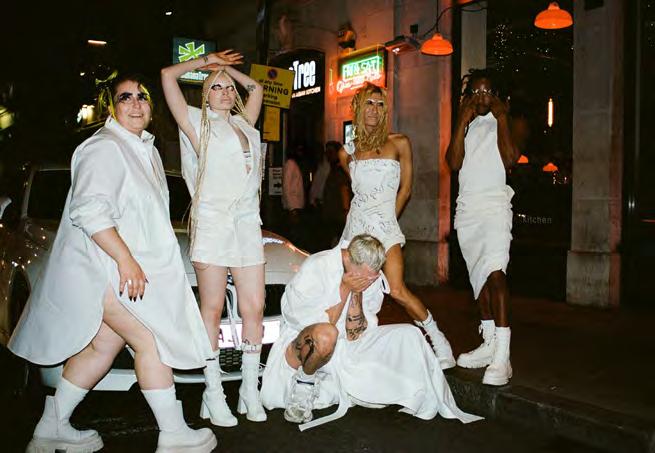
After completing his degree in fashion design in Basel, this designer from the east of Canton Baselland achieved international fame in 2022 when he won Heidi Klum’s TV-show “Making the Cut” and as a result was able to present his collection at New York Fashion Week. He manufactures his label, Maison Blanche, in Switzerland out of upcycled, biodegradable materials. He describes his style as “anti-fashion” and “trash garbage couture”. His designs are gender-neutral, deconstructed and provocative. He does not categorise his clothes according to standard clothing sizes.
Die junge Modedesignerin Anaïs Marti schwankt zwischen Kunst und Mode. Alle ihre Kleider sind unisex und von gustatorischen Erfahrungen inspiriert. Süss, salzig, sauer, bitter und umami übersetzt sie in Farben und Formen. Die aktuelle Kollektion wurde vollständig aus entsorgten Sweatshirts hergestellt – inspiriert von der Resteverwertung in der Küche. Jedes Stück ist ein Unikat, dennoch stehen alle zum Verkauf. Um Überproduktion zu vermeiden, sind alle Artikel auf Vorbestellung erhältlich. Collective Swallow Outfits können zudem für besondere Anlässe auch gemietet werden.

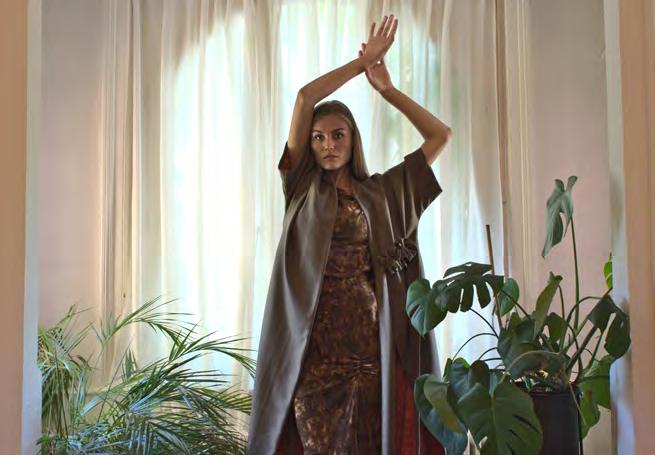
The young fashion designer Anaïs Marti sways between art and fashion. All her clothes are unisex and inspired by sensations of taste. She translates sweet, salty, sour, bitter and umami into shades and forms. The current collection was fabricated entirely out of discarded sweatshirts – inspired by making use of leftovers in the kitchen. Each piece is unique but they are all for sale. To avoid overproduction, the articles are available to order. Collective Swallow outfits can also be hired for special occasions.
minutae.ch
Schlichtes, saisonunabhängiges Design mit kleinen, feinen Details – das ist Minutæ. Hinter der Marke steht ein Kollektiv gleichgesinnter Designerinnen mit der Vision, umweltschonende Slow Fashion zu produzieren. Jedes Kleidungsstück wird aus Deadstock- und Vintage Stoffen hergestellt und ist einzigartig. Sämtliche Stücke werden im Basler Studio entworfen, und in der Schweiz und in Estland gefertigt. Auf dem Etikett steht jeweils, von wem.
Understated, non-seasonal design with tiny, delicate details – that’s Minutæ. Behind this brand, there is a collective of like-minded designers with a vision – to produce environmentally friendly Slow Fashion. Each piece of clothing is sewn out of deadstock and vintage fabrics and is unique. Each and every garment is designed at the studio in Basel and manufactured in Switzerland and Estonia. On the label, you can read by whom.
JILL BLOCH YANNIK ZAMBONI Bild: Moritz Schermbach & Collective Swallow Bild: Ronja Burkardichtragmono.ch
Das Stricklabel MONO stellt nur her, was bereits gekauft ist: Mit diesem problemorientierten Motto bekundet MONO den ökologischen Fortschritt. Keine Überproduktion, wenig Abfall, Einsparungen bei den Ressourcen – das ist preordern. Auf der Onlineplattform werden die aktuellen Designs vorgestellt und können bestellt werden. Die Produktion auf 3-D-Strickmaschinen (keine Nähte!) in Deutschland beginnt erst nach dem Kauf und dauert rund drei Wochen – Wartezeit, die Geld wert ist; dank leerem Lager und Direktverkauf sparst du bis zu 30 %.

The knitwear label MONO only manufactures items that have been pre-purchased: with this problem-oriented guiding principle MONO has achieved ecological progress. No over-production, little waste, saving resources – all thanks to pre-ordering. Current designs are presented on the online platform and can be ordered directly. The manufacture, on a 3-D-knitting machine (no seams!) in Germany only starts once the purchase is completed and takes around three weeks – a wait that pays off: you save up to 30 % on costs thanks to zero warehousing and direct sales.
shoplamarel.com
Faire Mode zu vernünftigen Preisen, das ist Lamarel. Das 2018 von der Basler Mode-Bloggerin und Influencerin Sandra Pinto gegründete Label verkauft perfekte Basics für den Alltag. Mäntel, Shirts, Hosen, Blazer, Kleider – alles in stark reduziertem Stil und somit perfekt für den jahrelangen Einsatz in allen Lebenslagen. Designt wird in Basel, produziert in kleinen Mengen in Portugal, Sandras zweiter Heimat. Für jede Online-Bestellung wird ein Baum gepflanzt. Seit Kurzem gibt es im Kleinbasel an der Oetlingerstrasse 74 sogar einen Lamarel-Store.

Fair fashion at reasonable prices, that’s Lamarel. This label, founded by the Basel fashion-blogger and influencer, Sandra Pinto, in 2018, sells perfect basics for everyday wear. Coats, shirts, trousers, jackets, dresses – all in a highly simplified style and thus ideal for years of use in any situation. Designed in Basel, the clothes are produced in small quantities in Portugal, Sandra’s second home. A tree is planted for every piece ordered online. A Lamarel store opened lately in Kleinbasel at the Oetlingerstrasse 74.
peon.ch
Der von drei Freunden jenseits des Modezirkus 2020 gegründete Lifestyle Brand beinhaltet entspannte T-Shirts, bequeme Sweatshirts und Hoodies – allesamt in minimalistischem Design. Designt wird zu Hause am Küchentisch, produziert in Kleinstmengen in Portugal. «Peón» heisst übrigens «Tagelöhner» auf Spanisch und impliziert, dass Peón eine Marke für alle ist. Geschlecht egal, Einkommen egal –Style hingegen nicht egal, weil cool sind die Klamotten natürlich schon!
This lifestyle brand, founded by three friends in 2020, far from the fashion circus, produces relaxed t-shirts and comfortable sweatshirts and hoodies – all in a minimalistic style. The designing is done at home, at the kitchen table, the production is in Portugal, in tiny quantities. “Peón”, by the way, means “wage labourer” in Spanish, meaning Peón is a label for everyone. Regardless of gender or income – but not regardless of style, because the clothes really are cool of course!
Im St. Johann an der Vogesenstrasse entwirft und näht die Designerin Laura Woodtli in einem Ein-Frau-Betrieb Hemden, Pullover, Shirts und Jacken mit auffälligen Mustern. Die Gestaltung der Stoffe stammt vom Künstler Thomas Woodtli, Lauras Vater. Seine Bilder werden mit Digitalprint auf jeweils ein Stück Stoff in der Grösse 150 x 200 cm übertragen. Daraus designt Laura dann unterschiedlich viele Kleidungsstücke – alles Unikate. LeWoo kann auf Bestellung, in ausgewählten Läden, an Events oder direkt im Atelier gekauft werden.

In her one-woman enterprise in the Vogesenstrasse in St. Johann, the designer Laura Woodtli designs and sews shirts, pullovers and jackets in eye-catching designs. The designs of the fabrics are by the artist Thomas Woodtli, Laura’s father. Each of his images is copied onto a piece of material measuring 150 x 200 cm. Laura then uses them to produce all sorts of different items of clothing – each one unique. LeWoo can be ordered or purchased at selected stores, at events or directly at the studio.
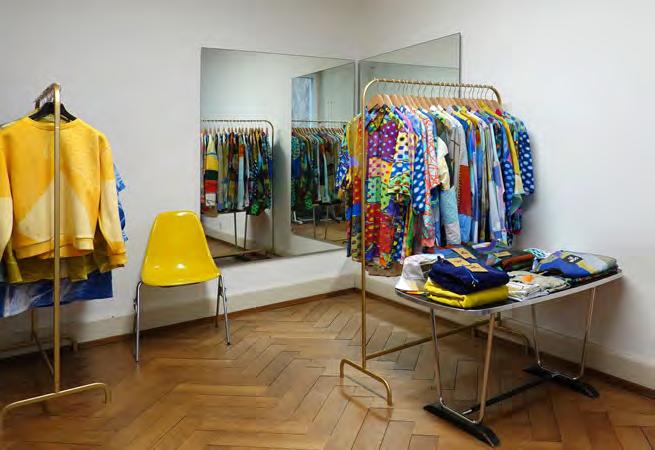








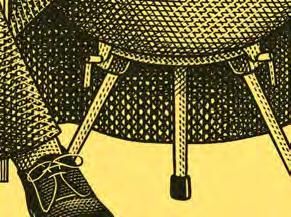

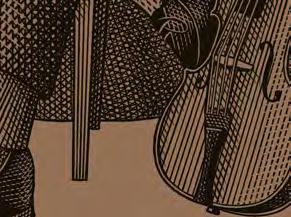















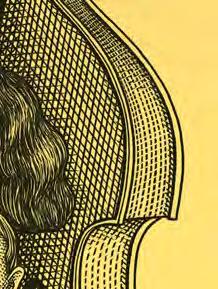
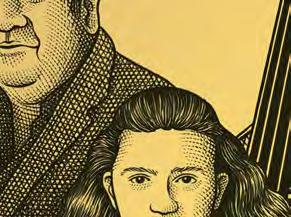
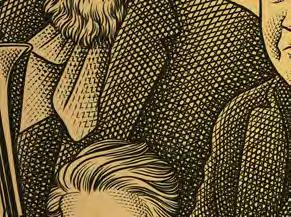
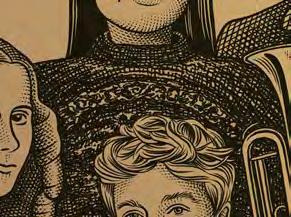




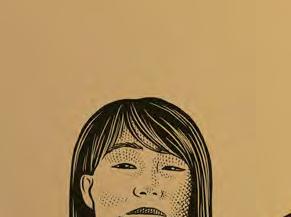
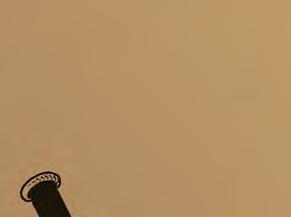





Knarrende Fussböden, Zeitungsgeraschel, entspannende Stille. Die Allgemeine Lesegesellschaft zelebriert das Buch und wird seit jeher als ruhiger Pol im hektischen Getriebe der Stadt geschätzt. Hier scheint die Zeit stillzustehen.
Es ist ein spezielles Gefühl, sich durch die Räumlichkeiten der Allgemeinen Lesegesellschaft zu bewegen. Die wunderschönen neogotischen Ornamente begleiten einen auf Schritt und Tritt – vom Treppenhaus in die Bibliothek und die Lesesäle. Der Geist der Aufklärung ist omnipräsent. Diesen zu spüren löst ein bereicherndes Gefühl von Glückseligkeit aus.
Gegründet 1787, ist die Allgemeine Lesegesellschaft im Zuge der Aufklärung entstanden. Ursprünglich im Reinacherhof am Münsterplatz 18 beheimatet, ist sie 1830 aus Platzgründen umgezogen – in ihr heutiges Zuhause schräg gegenüber am Münsterplatz 8. Hier bietet sie seit bald 200 Jahren einen stillen Rückzugsort für alle, die Freude an Büchern haben, am Wissen und Denken der Zeitgeschichte, an der Aussicht auf den Rhein, das Basler Münster und den Münsterplatz. Während die Mitgliedschaft früher nur Männern aus der Basler Bürgerschaft gewährt wurde, ist die Allgemeine Lesegesellschaft heute für alle offen.



Aus Begeisterung für Tradition
Verwalter und Seele des Hauses ist Andreas Lang. Seit 2009 repräsentiert er die Allgemeine Lesegesellschaft und erfreut sich jeden Tag an diesem magischen Ort. «Für mich ist es die Kombination aus Raum, Umgebung und Inhalt, welche diese Institution einzigartig macht», schwärmt er. Eine Begeisterung, welche er mit rund 1200 Mitgliedern teilt. «Es ist schön zu sehen, dass die Atmosphäre des Hauses auch heute noch so viele Leute anzieht und berührt. Auch Studierende schätzen diesen Ort, um konzentriert und ruhig lernen zu können.»
Wer die Allgemeine Lesegesellschaft betritt, schätzt die knarrenden Fussböden, das Geraschel der Zeitungen, die besonderen Farb- und Lichtspiele an den meterhohen Bücherregalen, welche durch hereinfallende Sonnenstrahlen entstehen – sowie die beinahe andächtige Stille. Dieser Ort scheint wie aus der Zeit gefallen. Andreas Lang ist es wichtig zu betonen: «Es ist nicht ein altmodischer Ort, sondern ein zeitloser Ort. Unser Ziel ist es, die Tradition der Allgemeinen Lesegesellschaft weiterzuführen und deren aufklärerischen Geist weiterzutragen. Was gut ist, soll gut bleiben und bewahrt werden.»
Eine zeitlose Institution im Namen des Buches Wer nun denkt, die Bibliothek der Allgemeinen Lesegesellschaft verfüge nur über ältere Bücher, irrt sich. «Wir möchten à jour sein. Neuerscheinungen haben wir genauso im Sortiment wie Klassiker der Literatur», erklärt Andreas Lang. Ihr Bestand umfasse sämtliche Buchgattungen von Belletristik in verschiedenen Sprachen über Sachbücher und Reiseliteratur bis hin zu historischer und wissenschaftlicher Literatur. Einzig die Kinder- und Jugendliteratur suche man hier vergebens.


Die Allgemeine Lesegesellschaft zelebriert das Buch, das Wissen und den Wandel der Zeit in gedruckter Form. «Sämtliche Prognosen, die das Ende des Buches prophezeit haben, haben sich nicht bewahrheitet», sagt Andreas Lang und ist daher zuversichtlich: «Trotz Digitalisierung wird es immer Bücher geben.» Die Allgemeine Lesegesellschaft trägt mit ihrer langen Tradition im Namen des Buches ihren Teil dazu bei.

ALLGEMEINE LESEGESELLSCHAFT
Münsterplatz 8 lesegesellschaft-basel.ch
Die Allgemeine Lesegesellschaft ist offiziell nur Mitgliedern zugänglich. Für eine Besichtigung der Räumlichkeiten wenden Sie sich bitte an das Personal.
Creaking wooden floors, the rustle of newspapers, relaxing tranquillity. The reading rooms of the General Reading Society are a homage to books, treasured as an oasis of calm at the heart of the city’s hectic hustle and bustle for a very long time now. It feels as though time has stood still here.
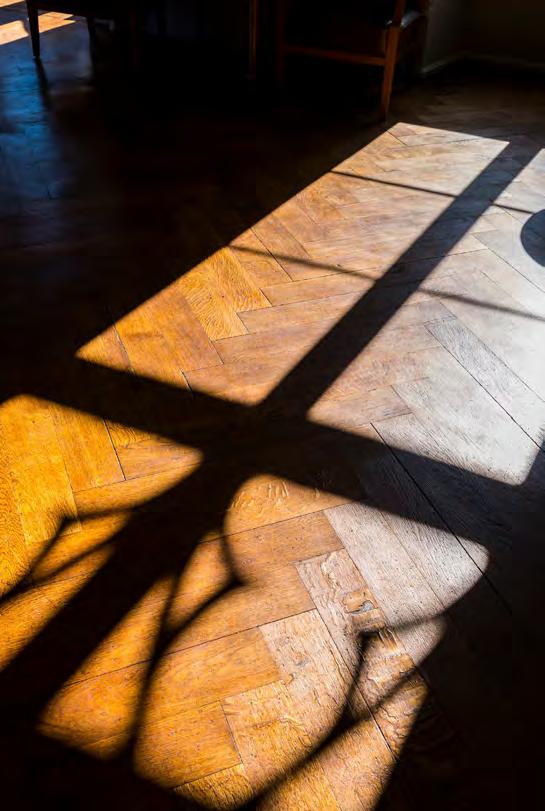
Wandering through the rooms of the General Reading Society is a special experience. With neo-Gothic ornamentation at every step – from the staircase to the library to the reading rooms. The spirit of the Enlightenment is ever-present. Sensing this presence floods you with a balmy sensation of bliss.

Founded in 1787, the General Reading Society evolved in the course of the Enlightenment. It was originally housed at the Reinacherhof, Münsterplatz 18, but moved in 1830 because more space was required – to its current home, across the square at Münsterplatz 8. For almost 200 years now it has been a quiet retreat for anyone who loves books, knowledge and pondering current affairs with a view over the Rhine, Basel’s Cathedral and the Münsterplatz. While membership used to be restricted to gentlemen who were citizens of Basel, these days the Reading Society is open to everyone.
The custodian and soul of the establishment is Andreas Lang. He has represented the Reading Society since 2009 and takes pleasure in this enchanted place every single day.
“For me, it is the combination of the rooms, the surroundings and the content which makes this institution so unique”, he raves. An enthusiasm which he shares with around 1,200 members. “It is lovely to see how the atmosphere of this place still attracts and moves so many people today. Students treasure it here too; they can concentrate and learn in peace and quiet.”
Anyone who enters the General Reading Society is struck by the creaking floors, the rustle of newspapers and the play of light and colour from the sun’s rays falling on the metre-high bookshelves – and by the almost devotional silence. This place feels as though time has passed it by. Andreas Lang is keen to emphasise that: “This is not an old-fashioned place; it is a timeless place. Our aim is to carry on the tradition of the General Reading Society and to pass on its enlightened spirit. Things that are good deserve to remain good and be preserved.”

Münsterplatz 8 lesegesellschaft-basel.ch
Officially, the General Reading Society is only open to members. For a tour of the premises, please contact the staff.

If you think the library of the reading society only contains old books, you are very much mistaken. “We want to be up-to-date. Our catalogue includes new publications along with the classics of literature”, explains Andreas Lang. They stock almost every genre of book, from fiction in a number of languages through to non-fiction and travel books, as well as historical and scientific literature. The only thing you will seek in vain here is literature aimed at children and teenagers.
The General Reading Society celebrates books, knowledge and the course of time in printed form. “All the forecasts predicting the demise of the book have been wrong”, says Andreas Lang which is why he is confident that “Despite digitalisation, there will always be books.” The General Reading Society, with its long tradition on behalf of books is doing its part to make sure that is so.

“For me, it is the combination of the rooms, the surroundings and the content which makes this institution so unique.”
Aus Liebe zur Basler City entstanden, mit Leidenschaft und Gefühl für unsere Stadt kreiert und durch authentische und emotionale Geschichten bereichert.
Born out of love for Basel City, created with passion and devotion to our town and enriched with authentic and emotional stories.



PUBLISHER StadtKonzeptBasel Grenzacherstrasse 79 4058 Basel
CONTENT
StadtKonzeptBasel / BaselLive
Translation: Jane Wolff
Proofreading: Friedrich Reinhardt Verlag
DESIGN
Das Atelier Basel dasatelier-basel.com
